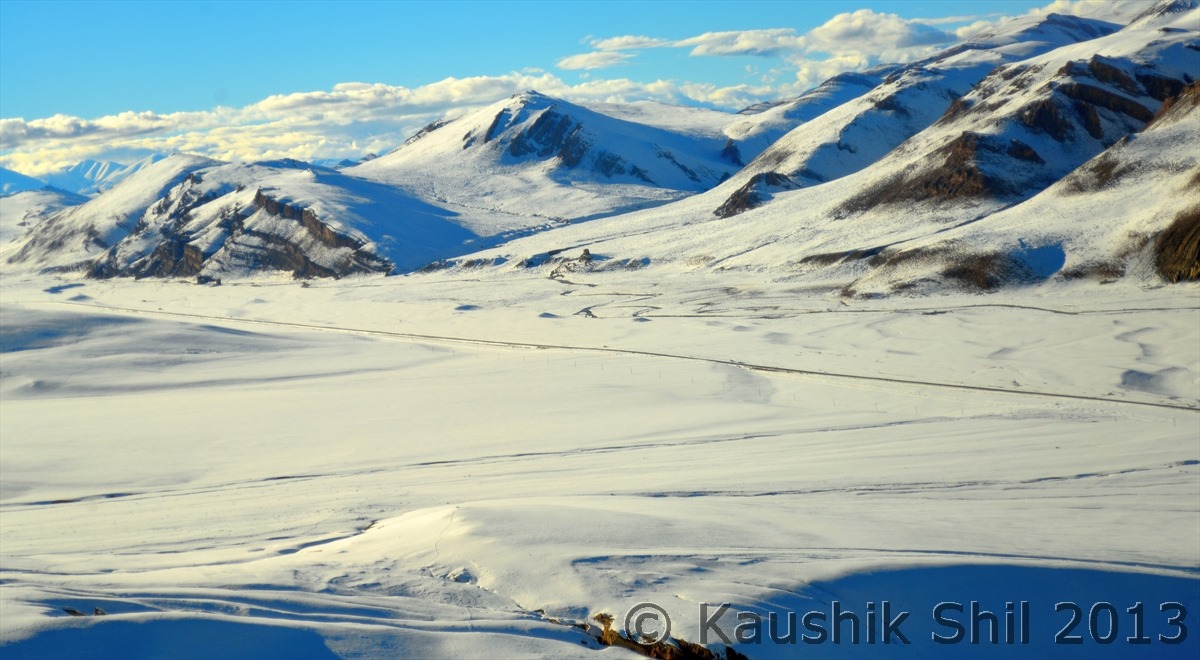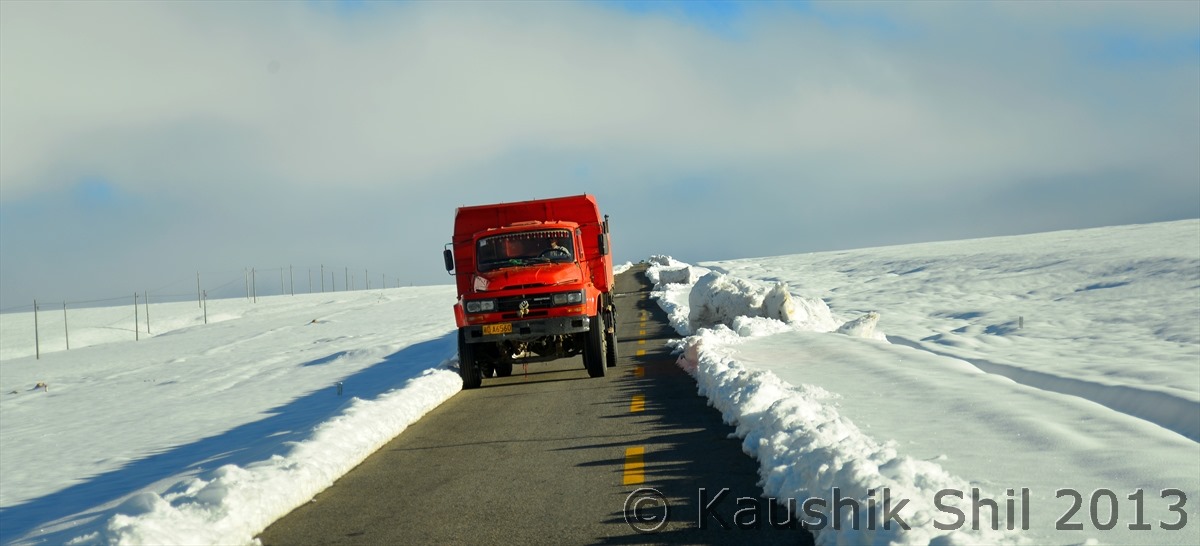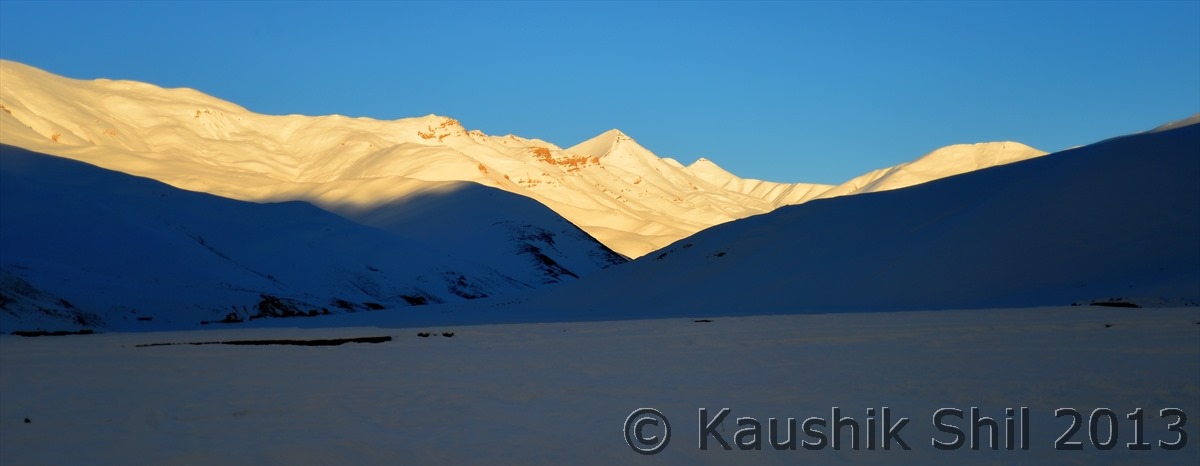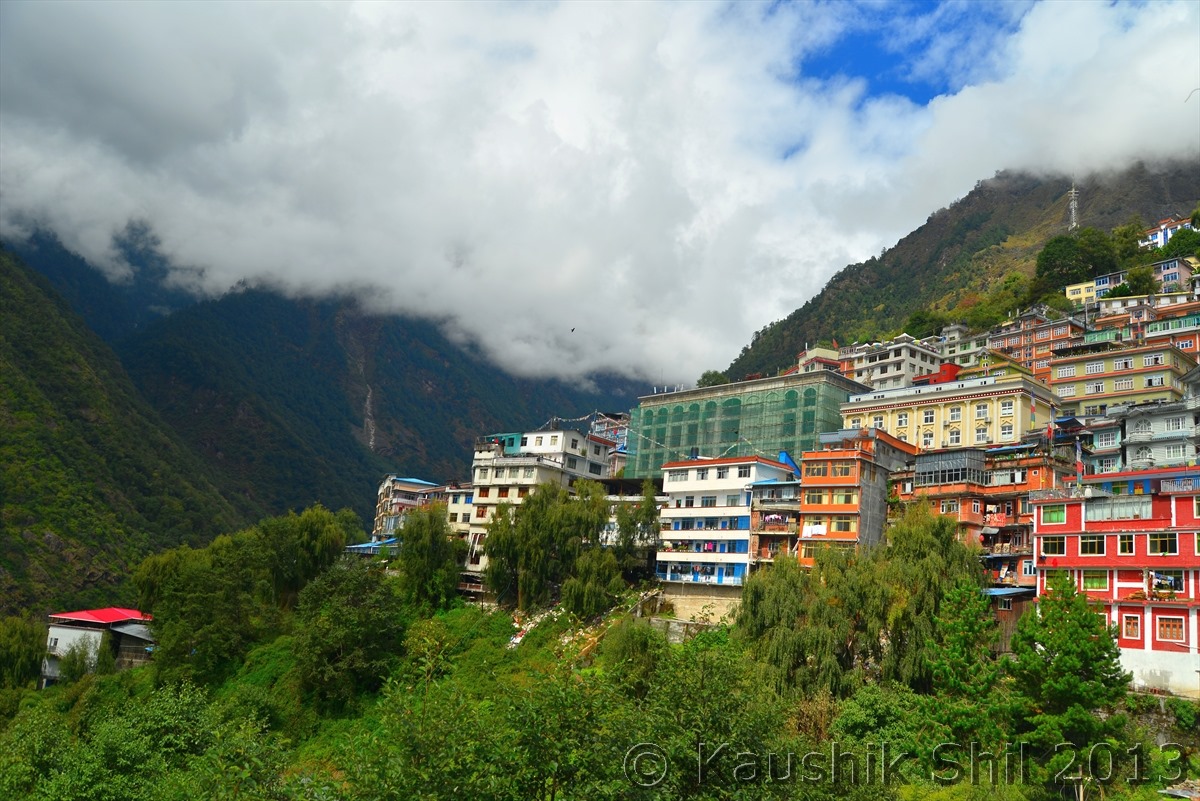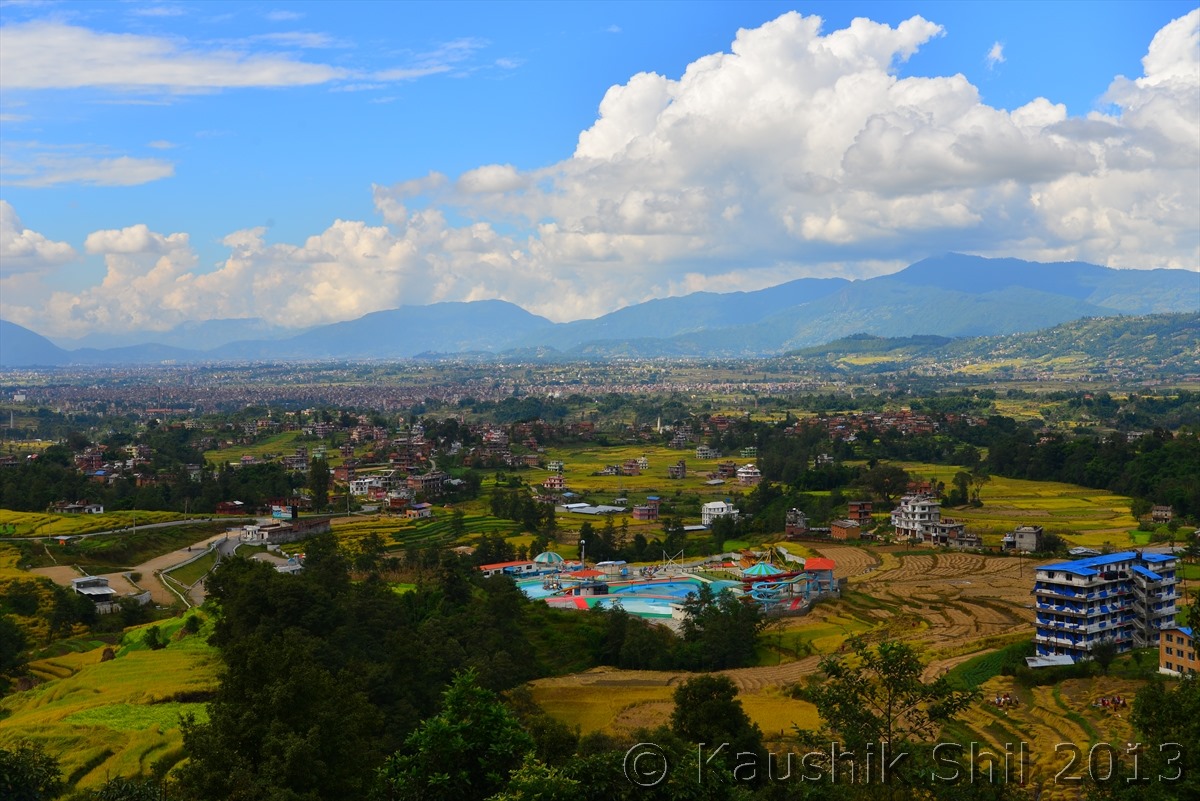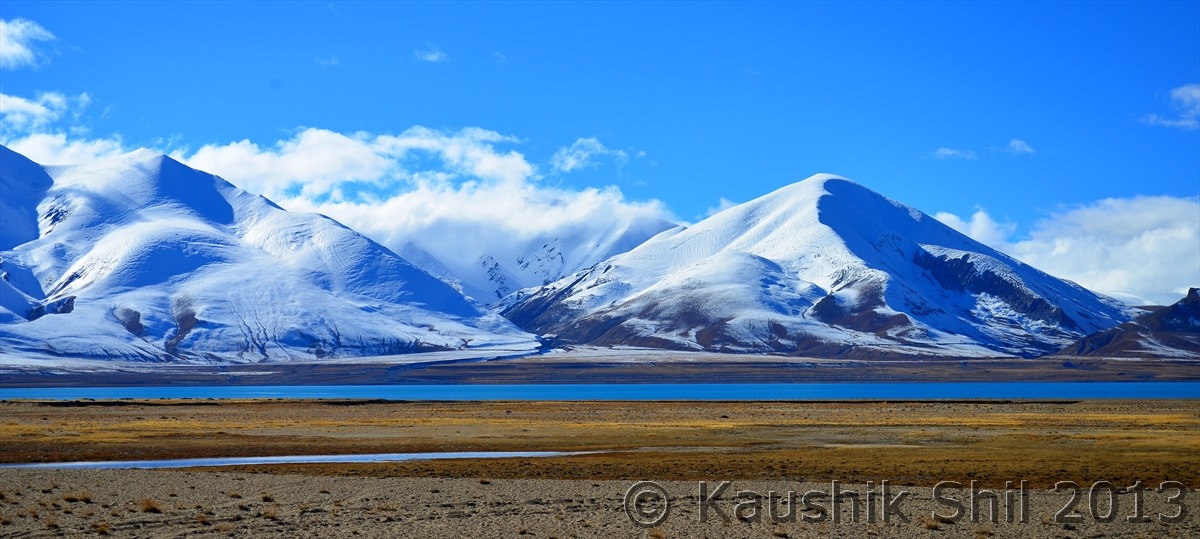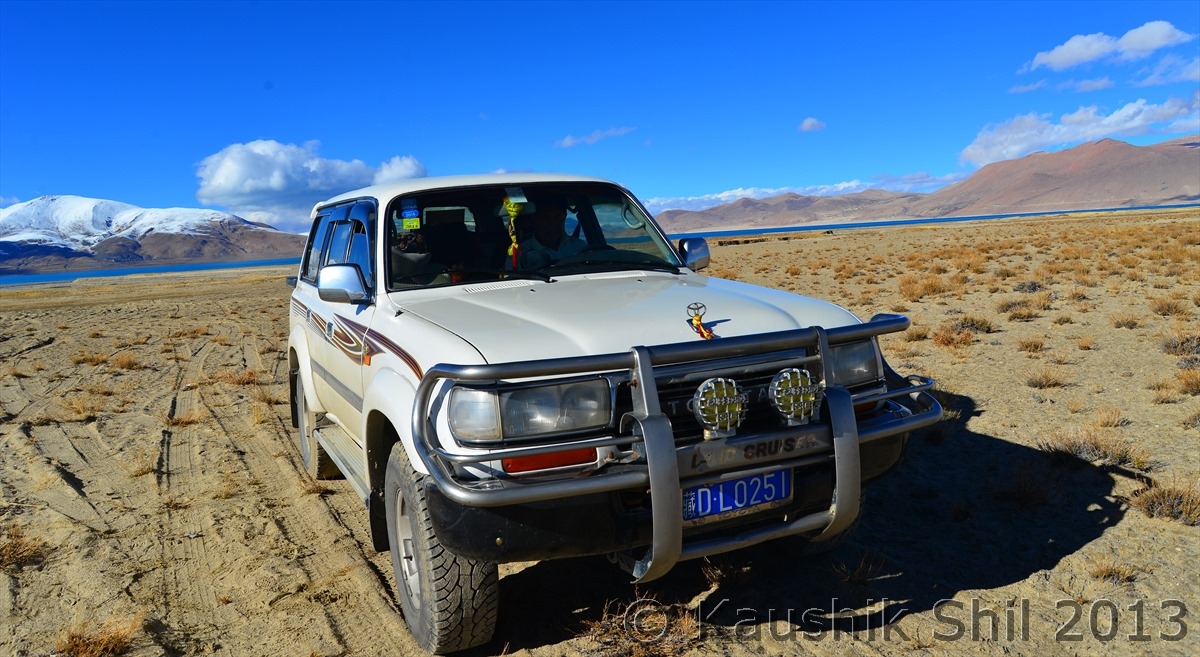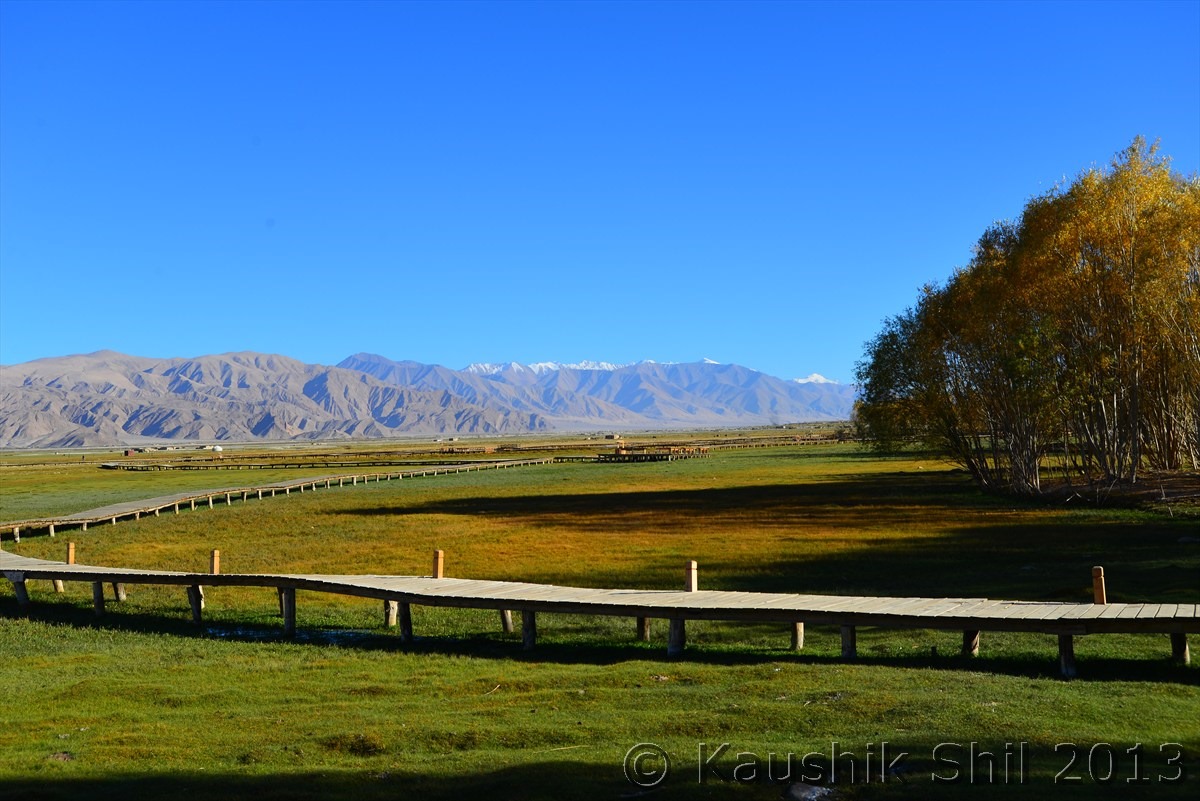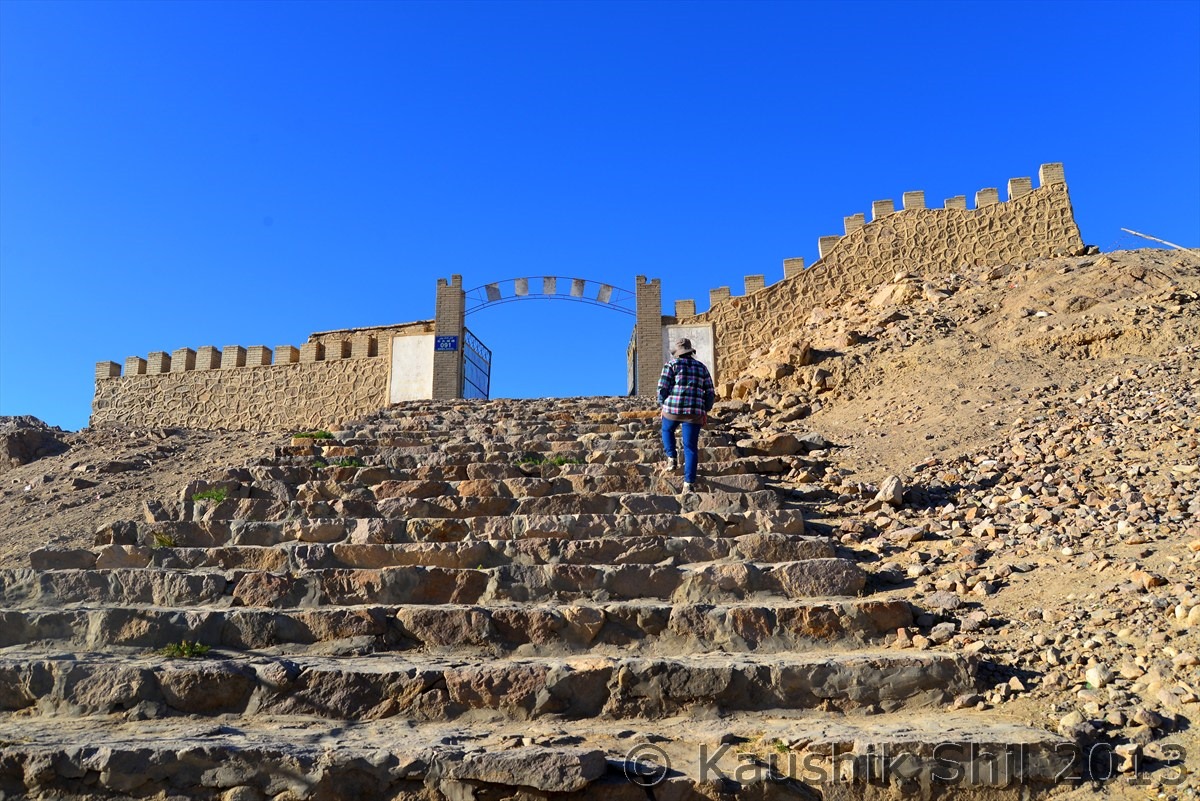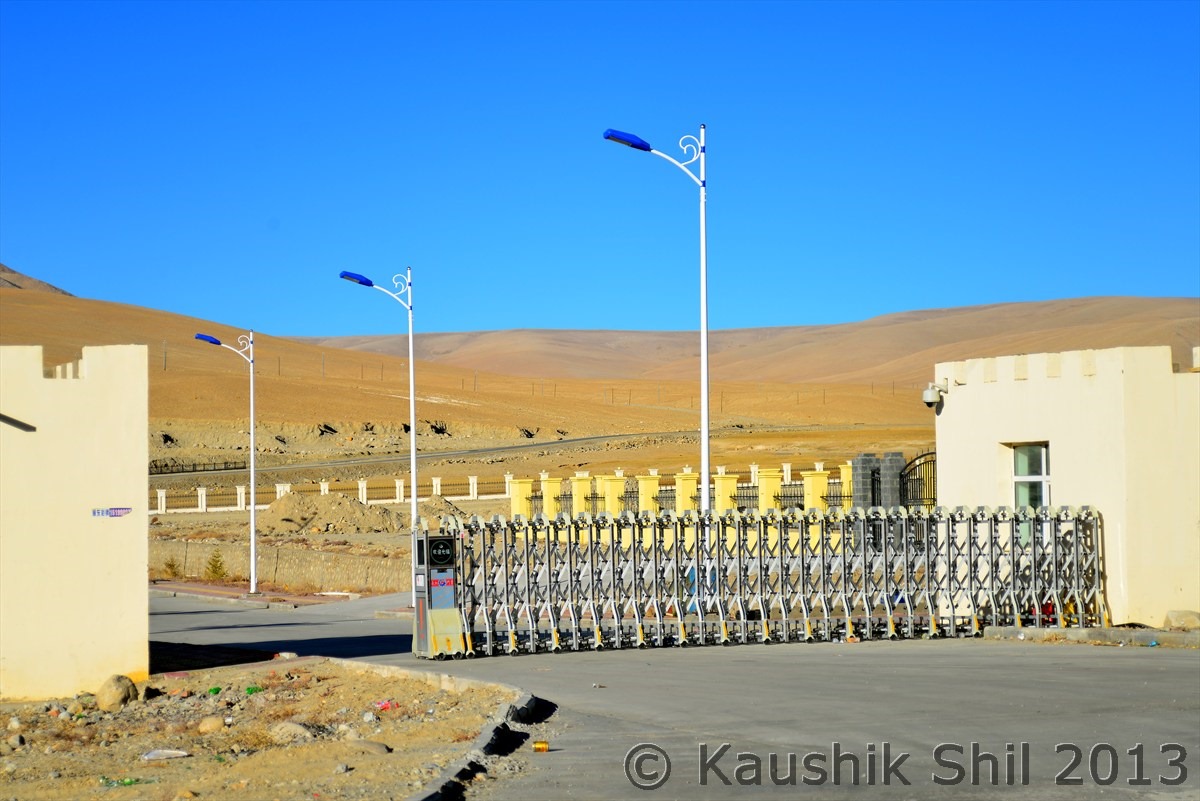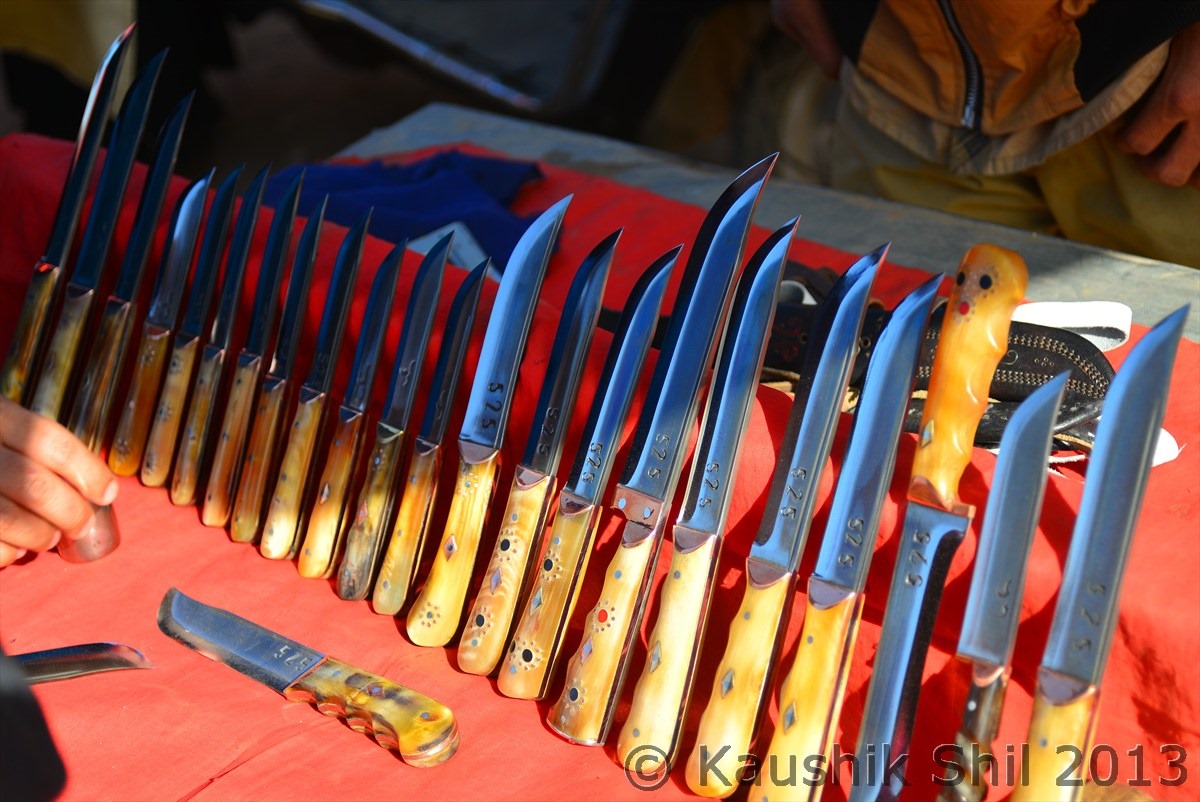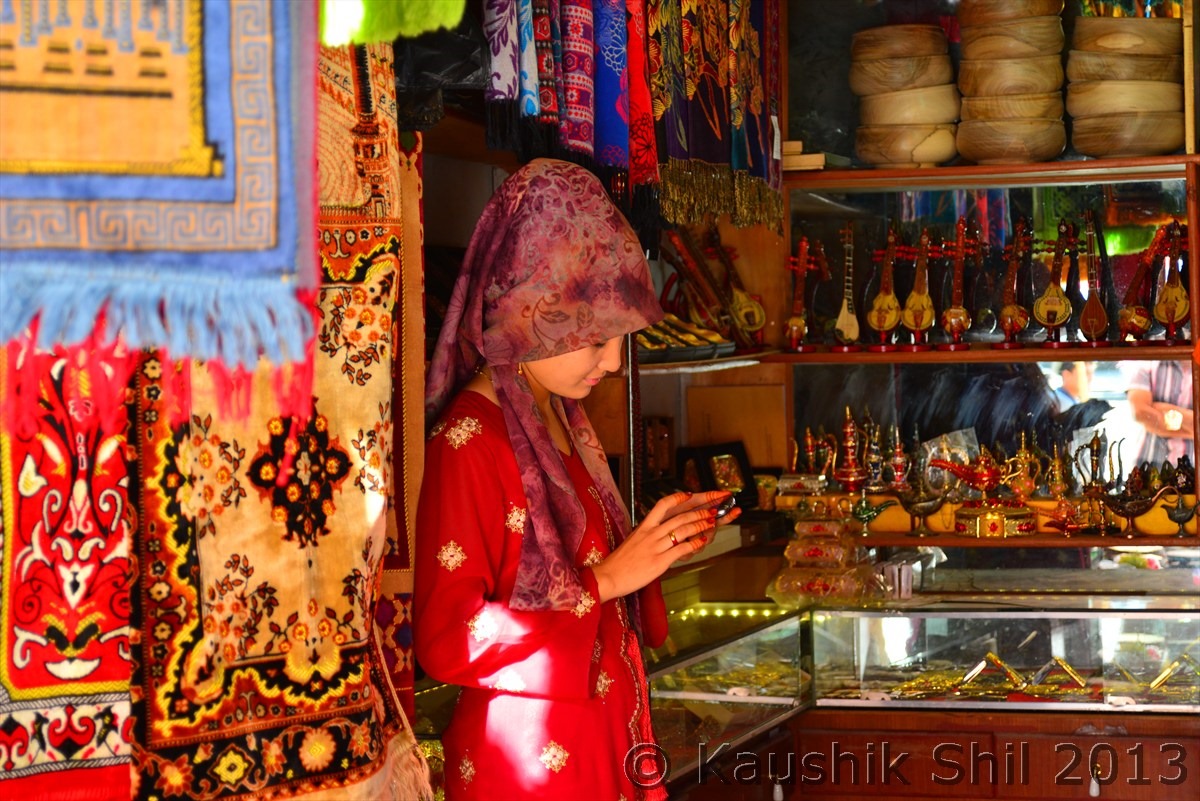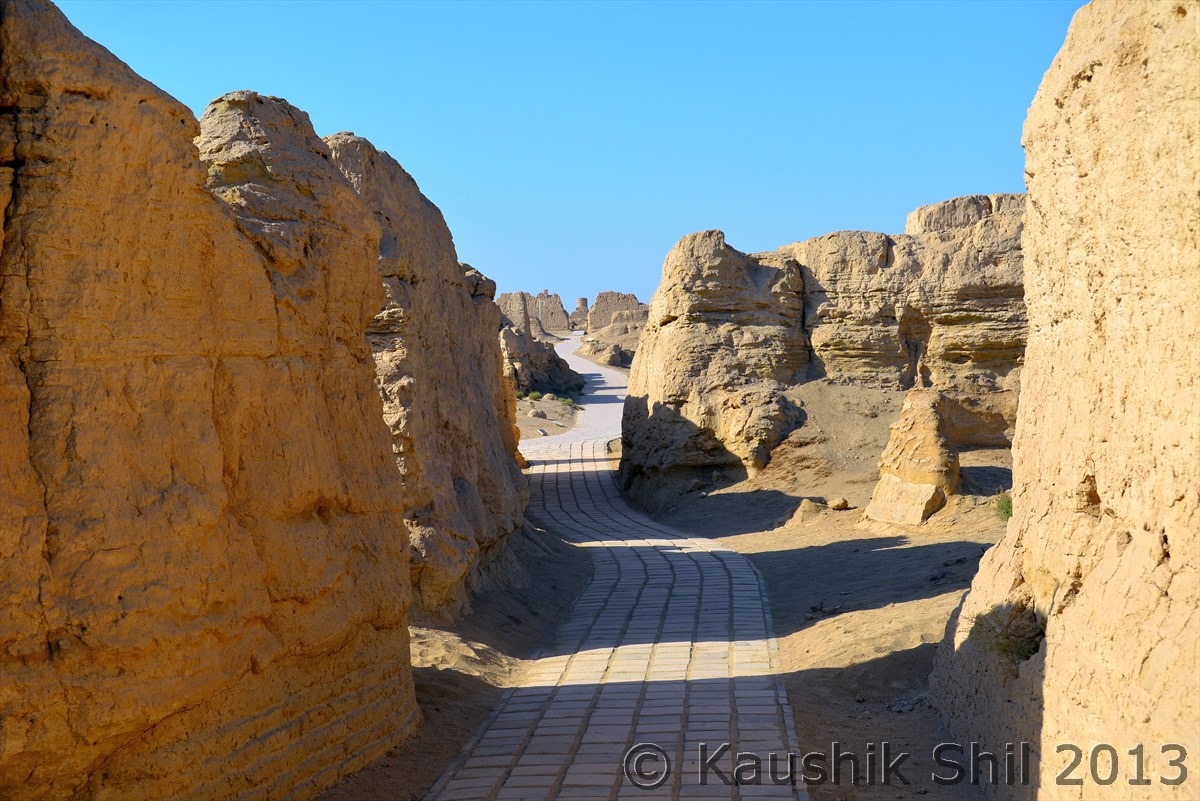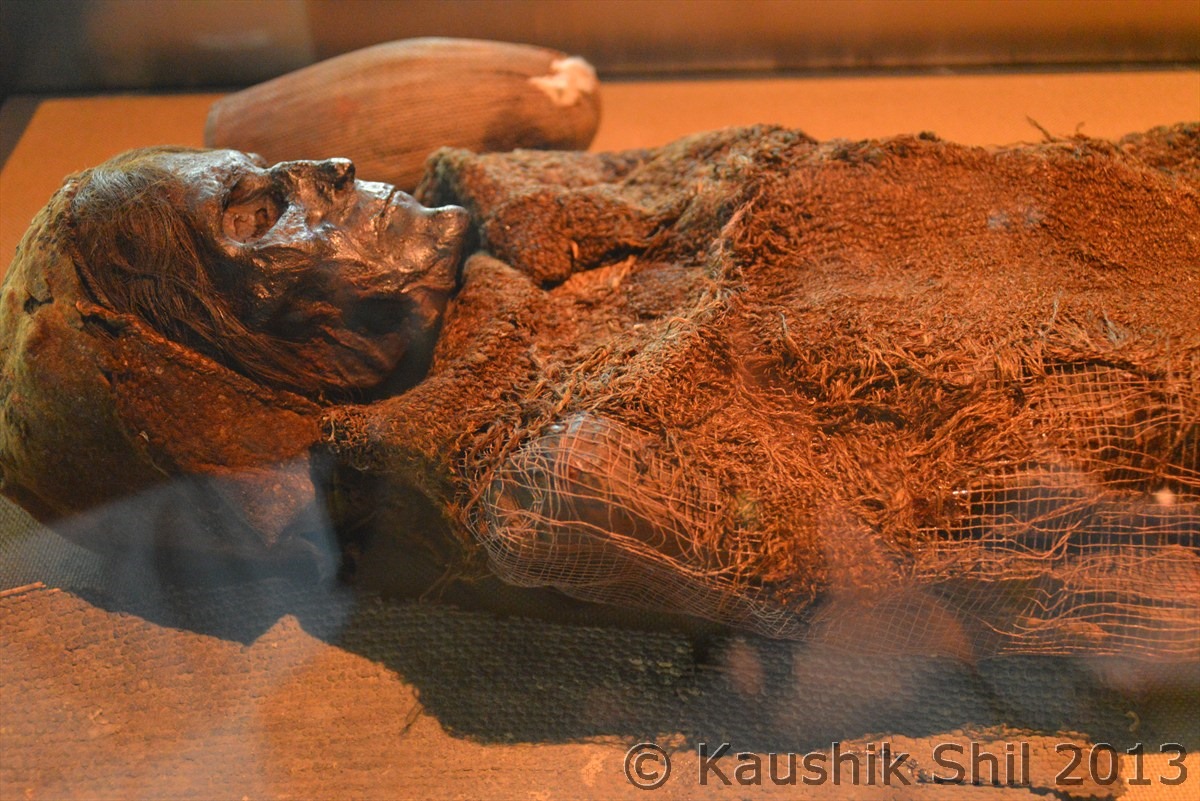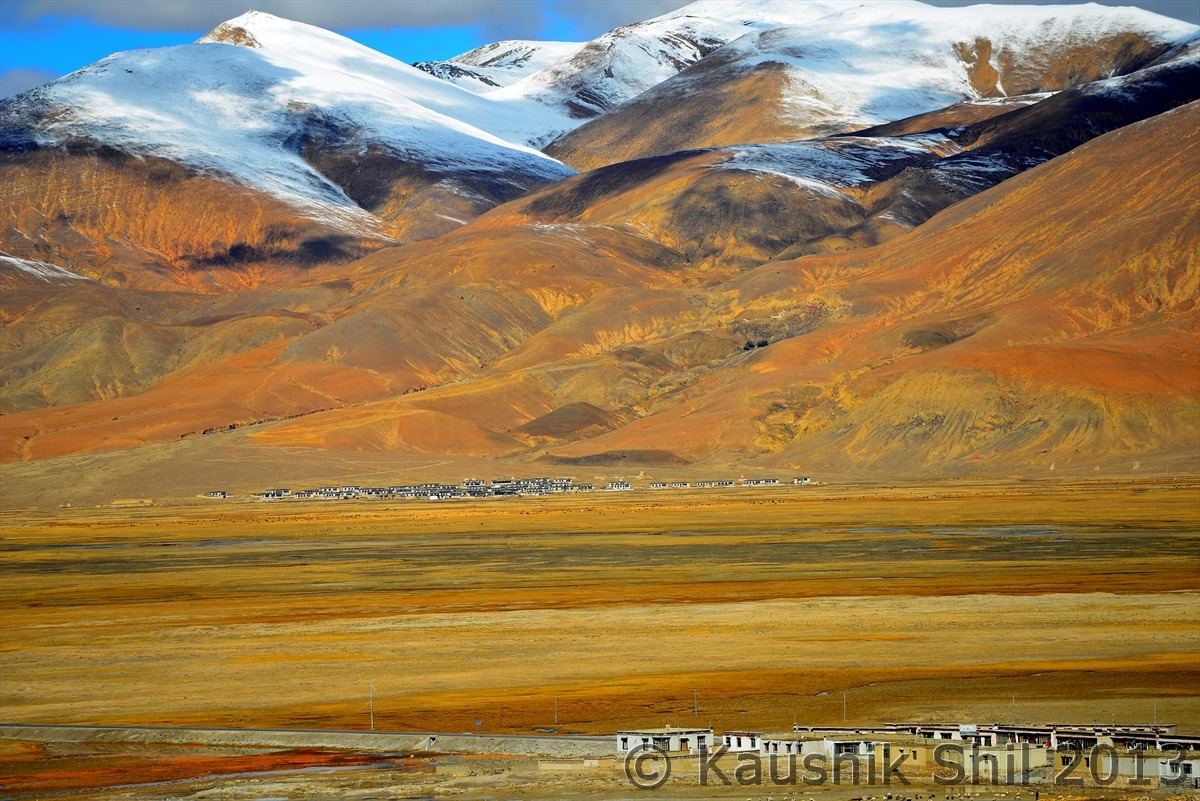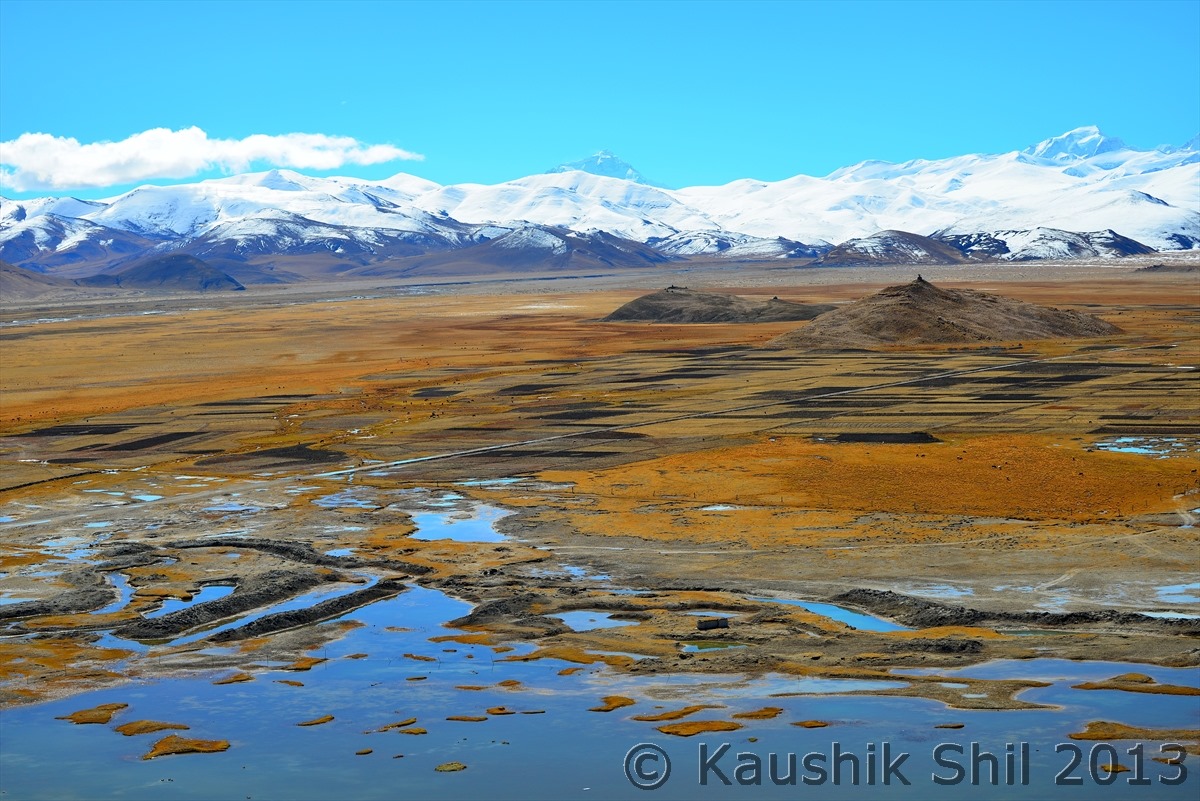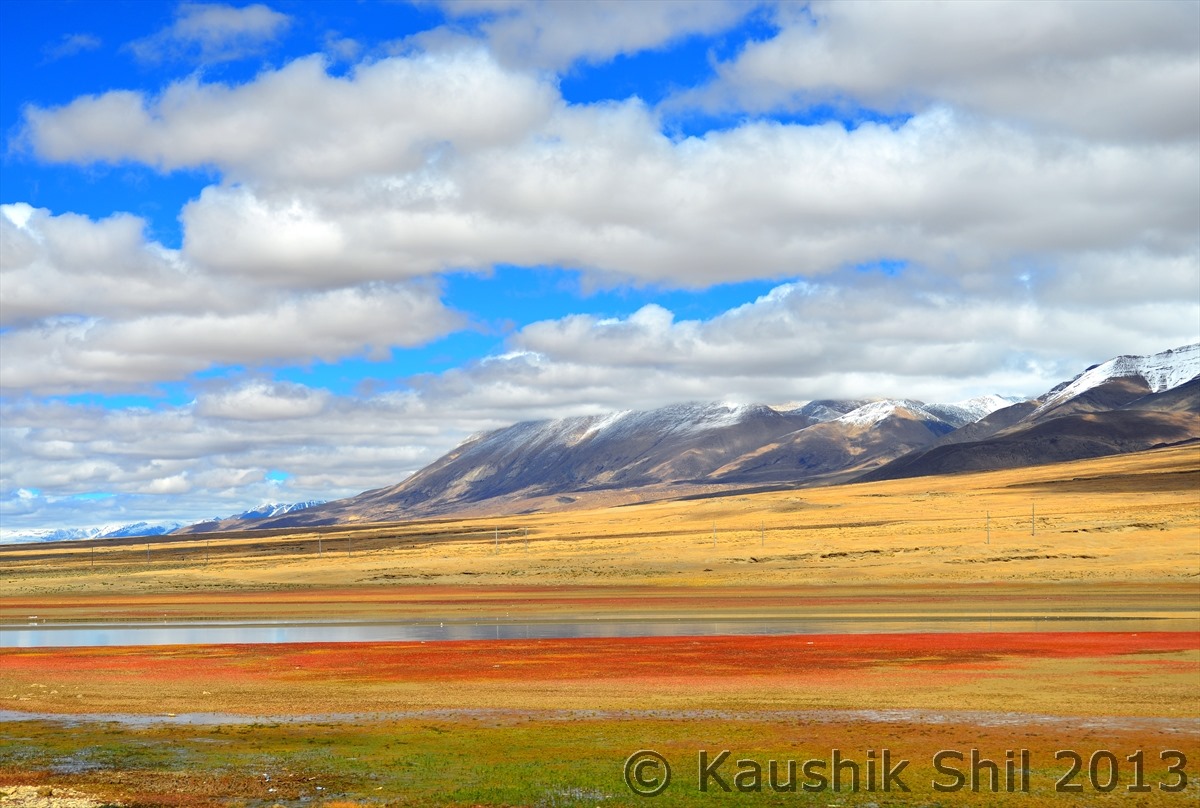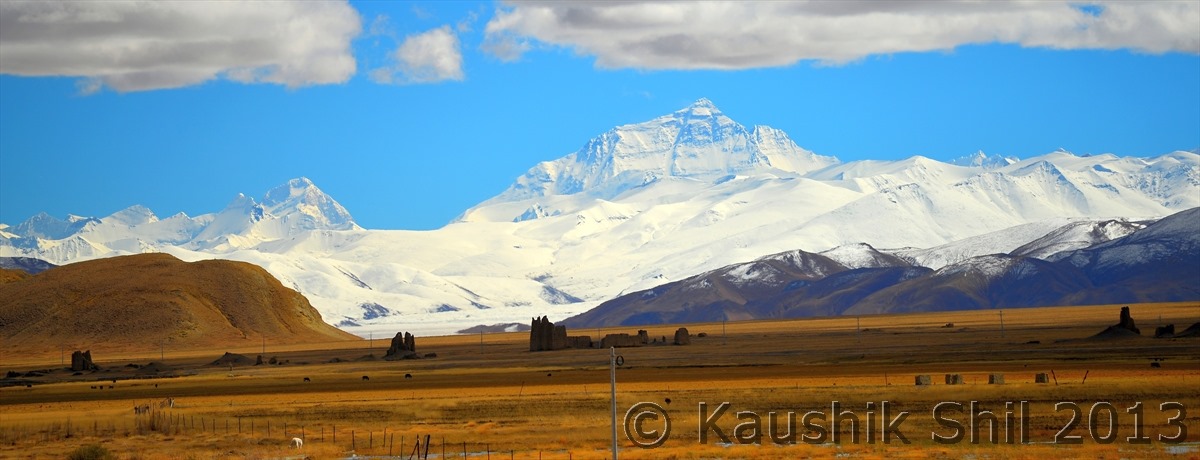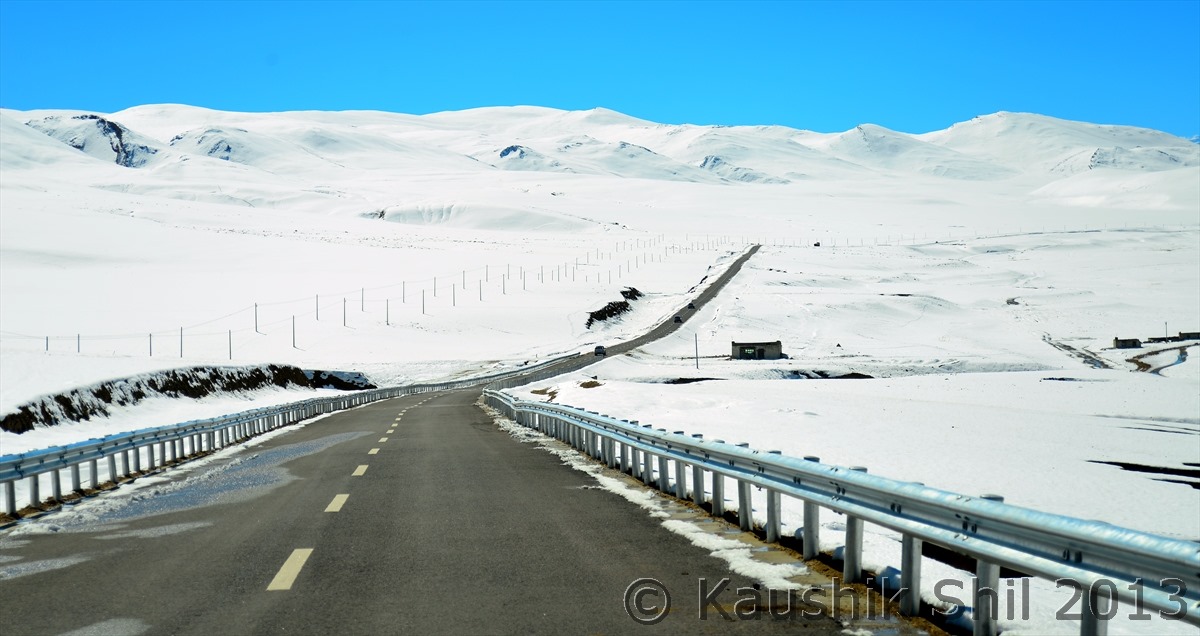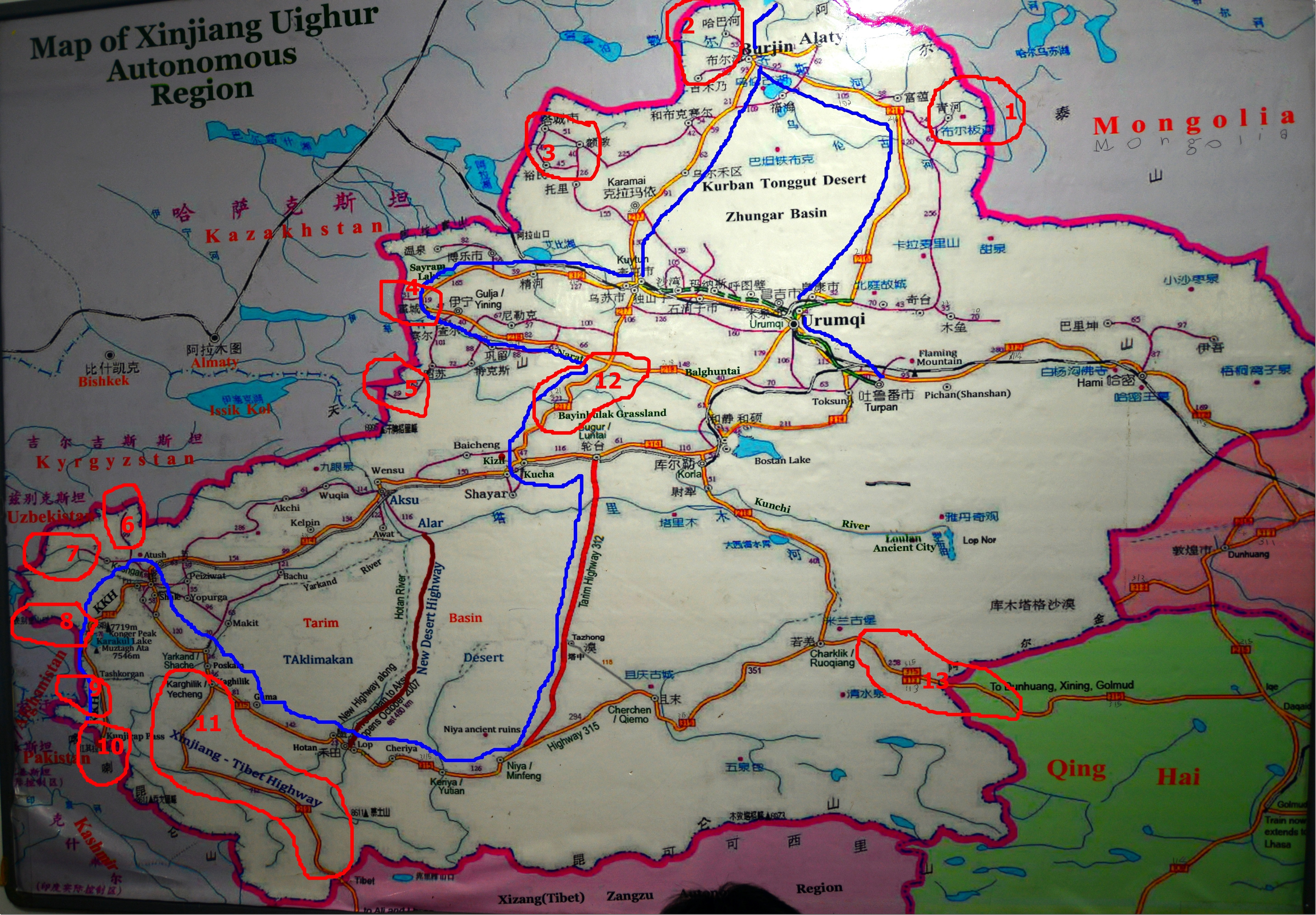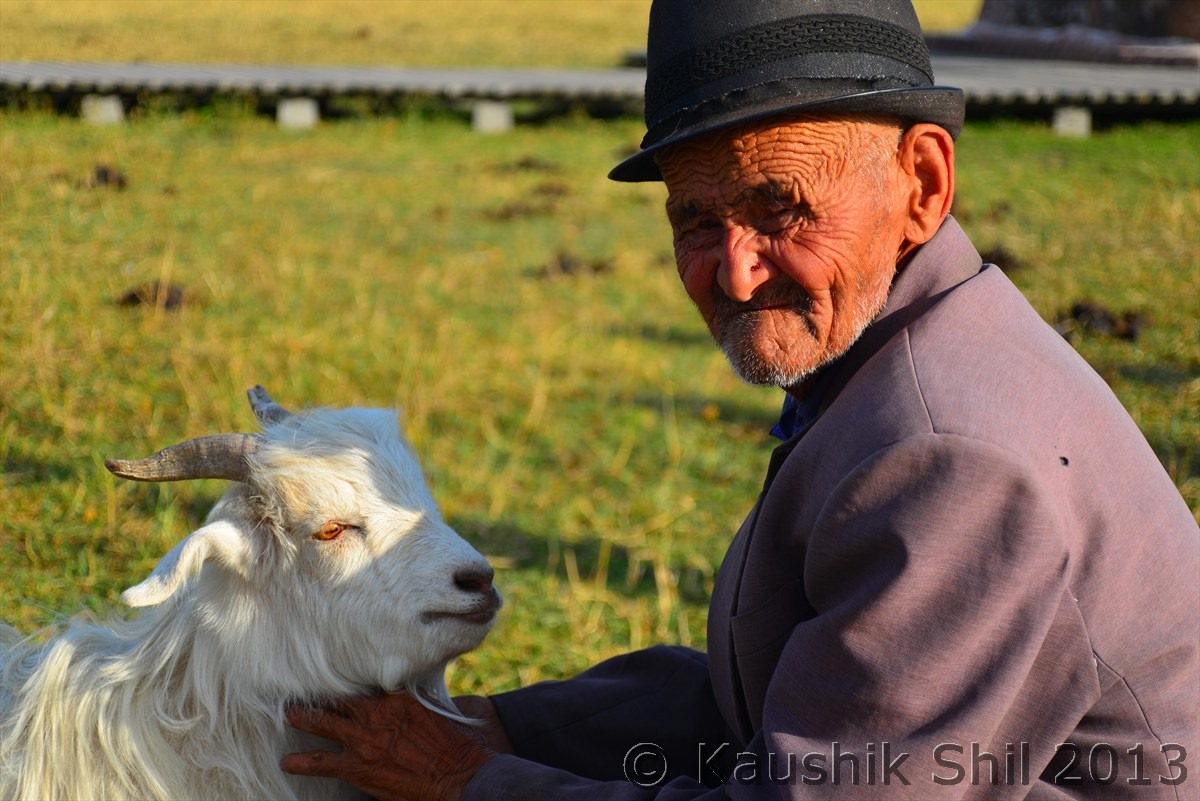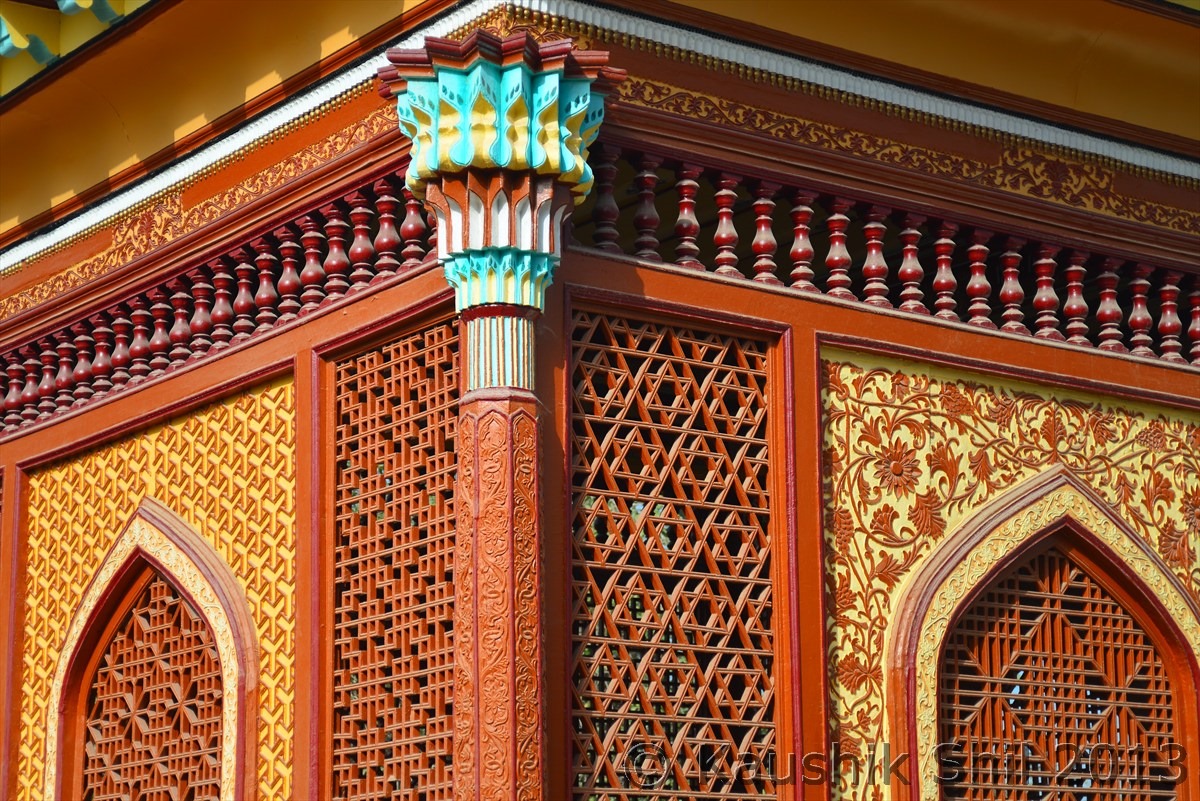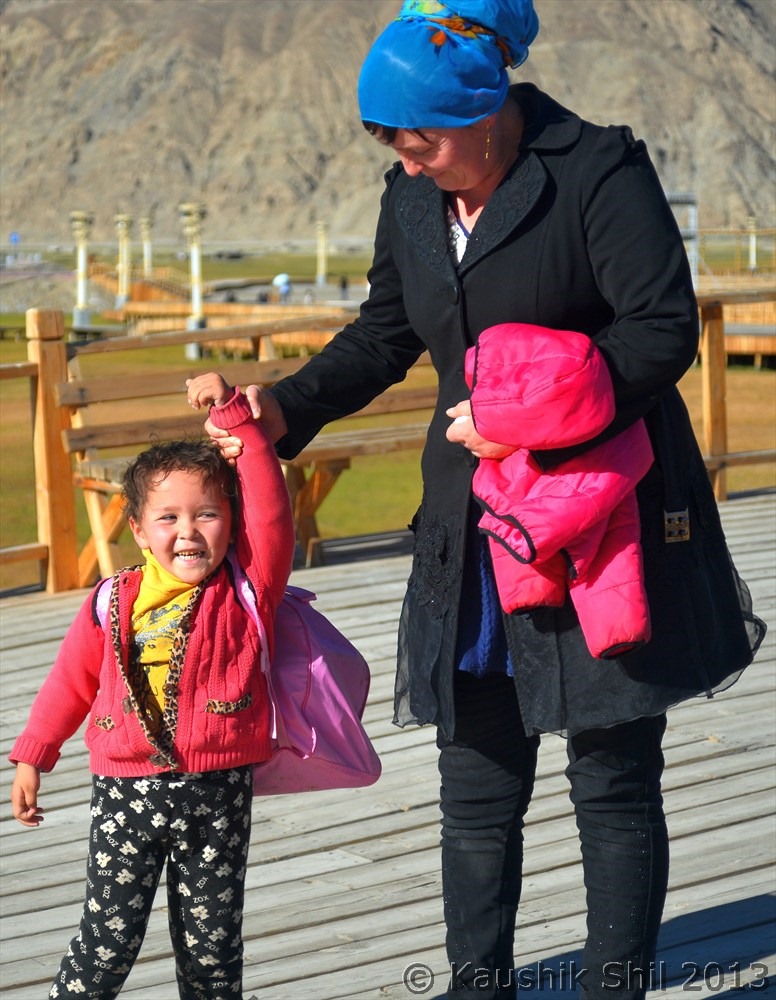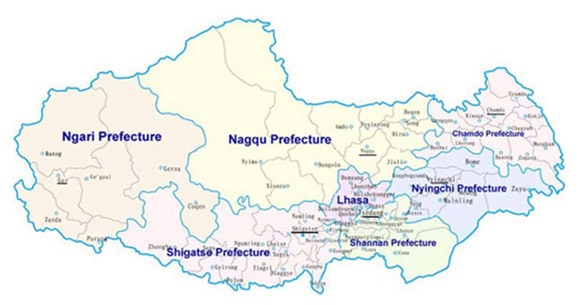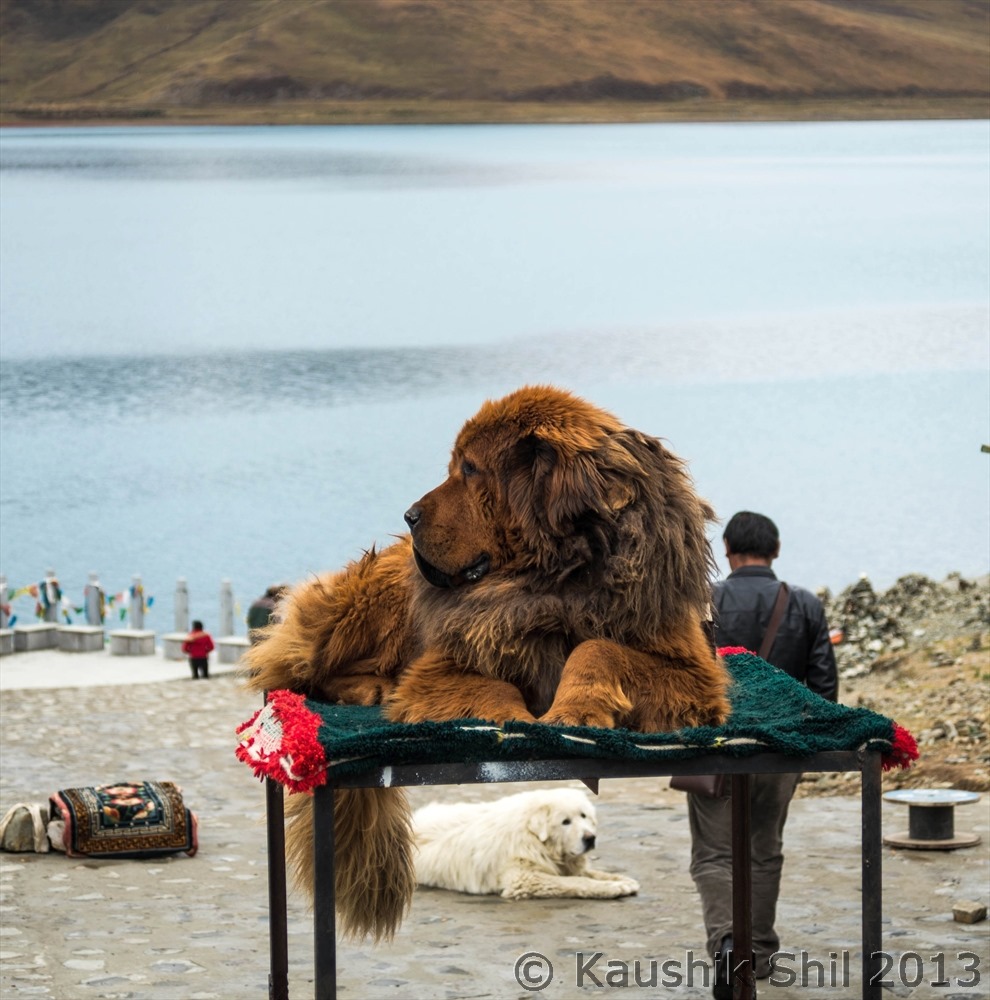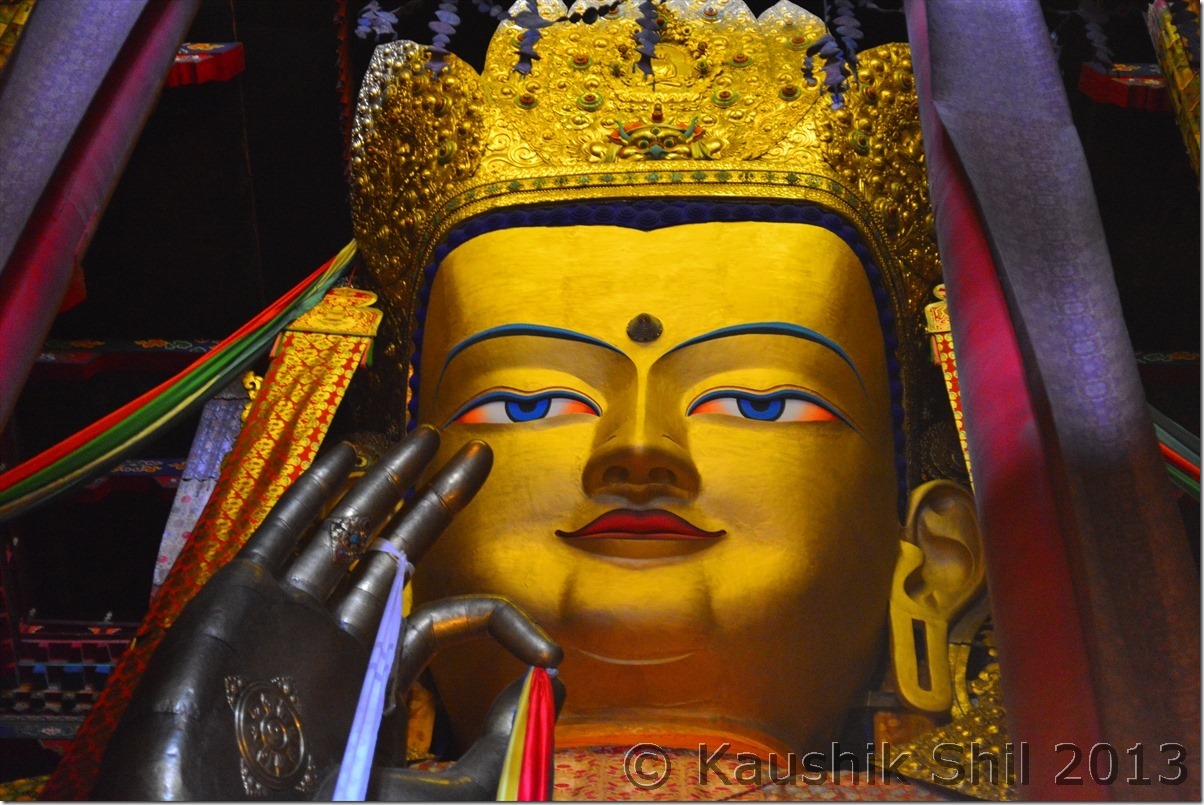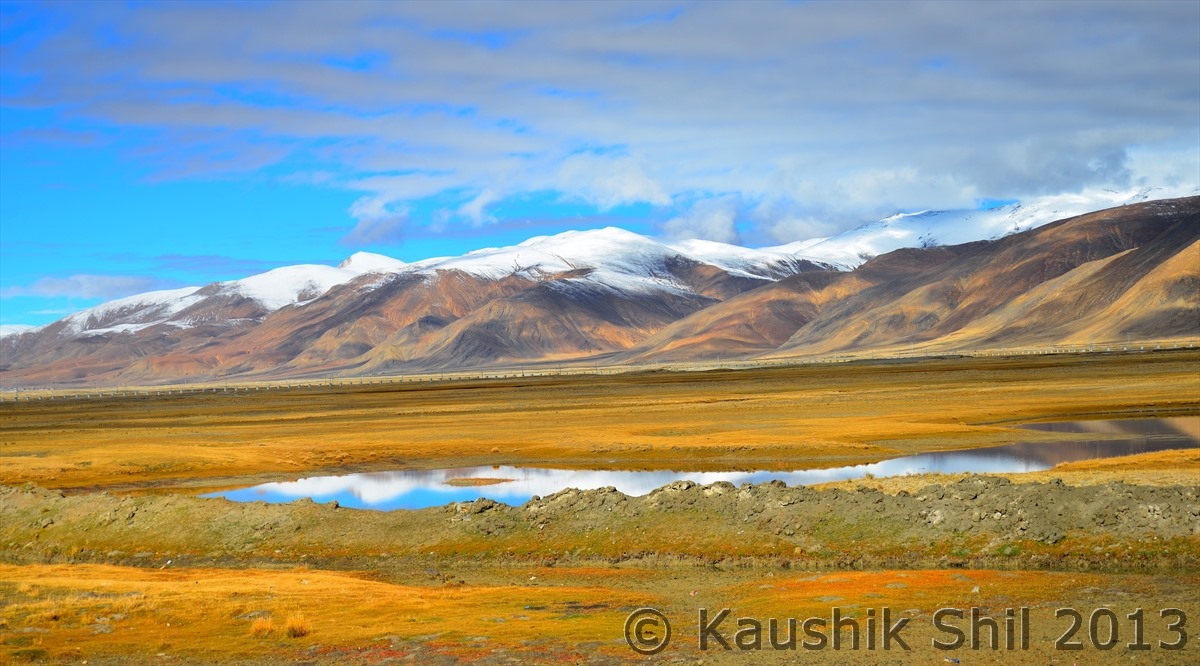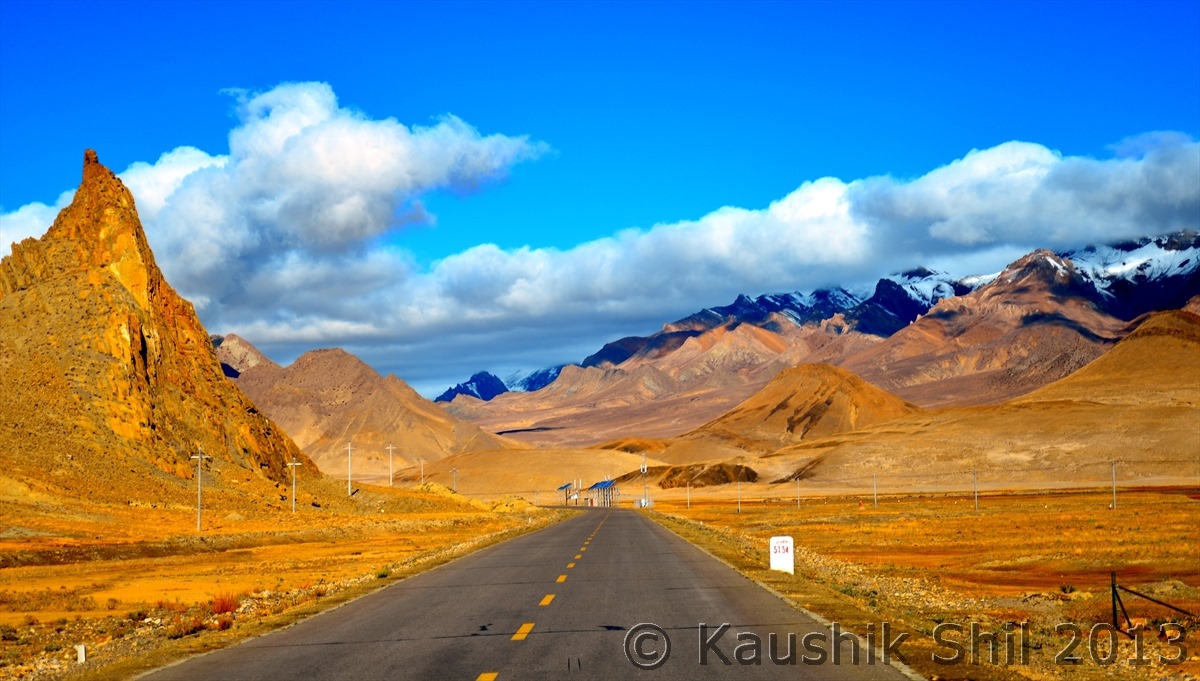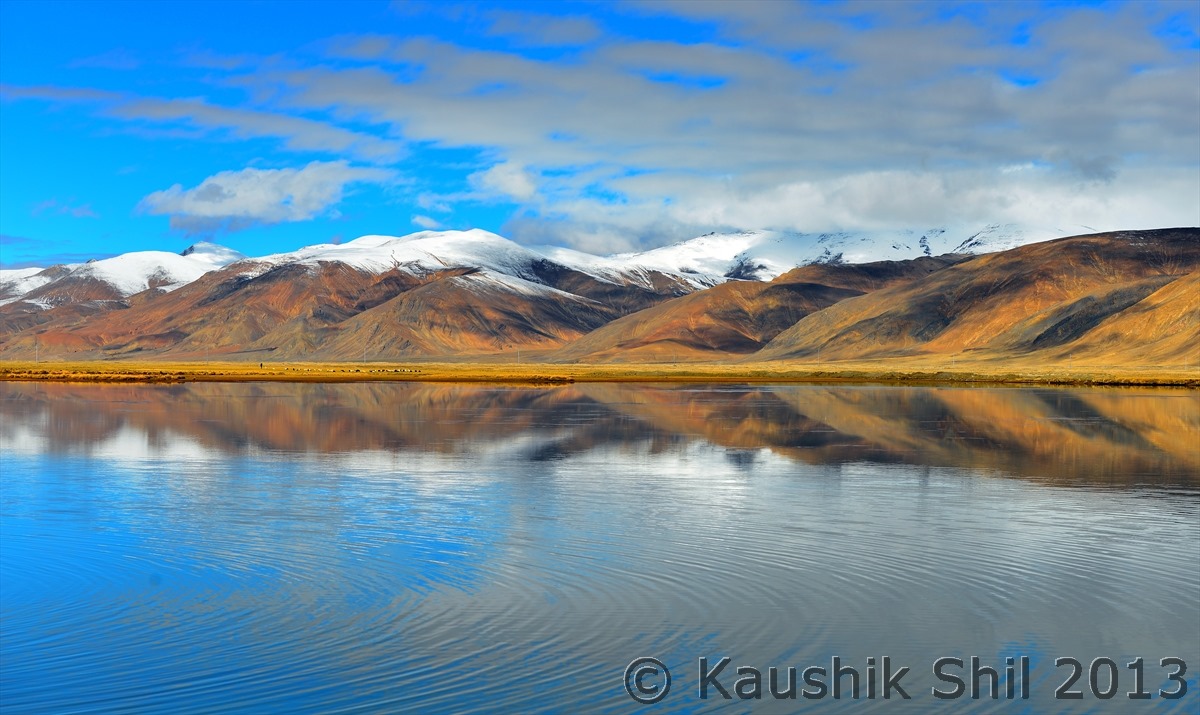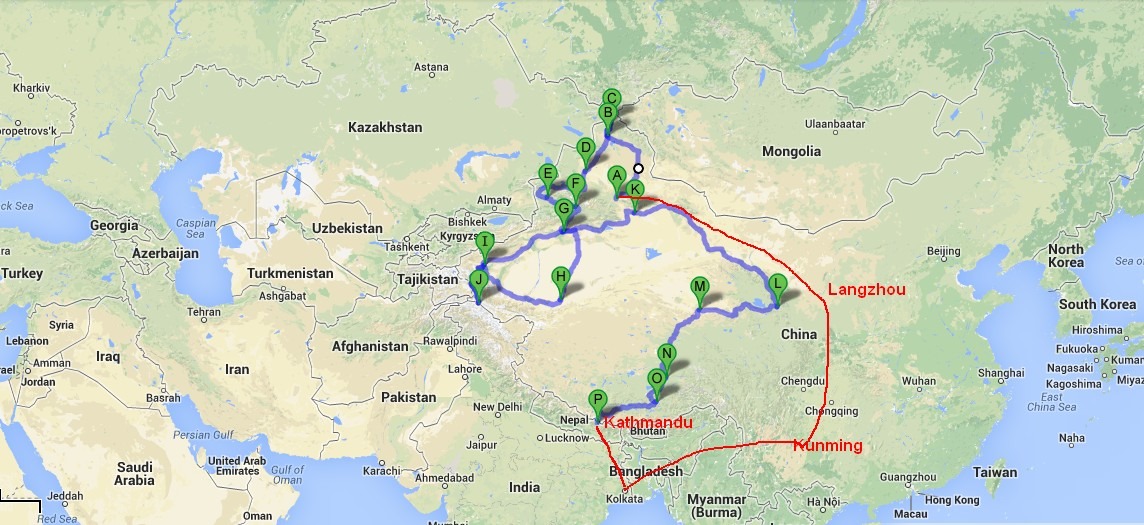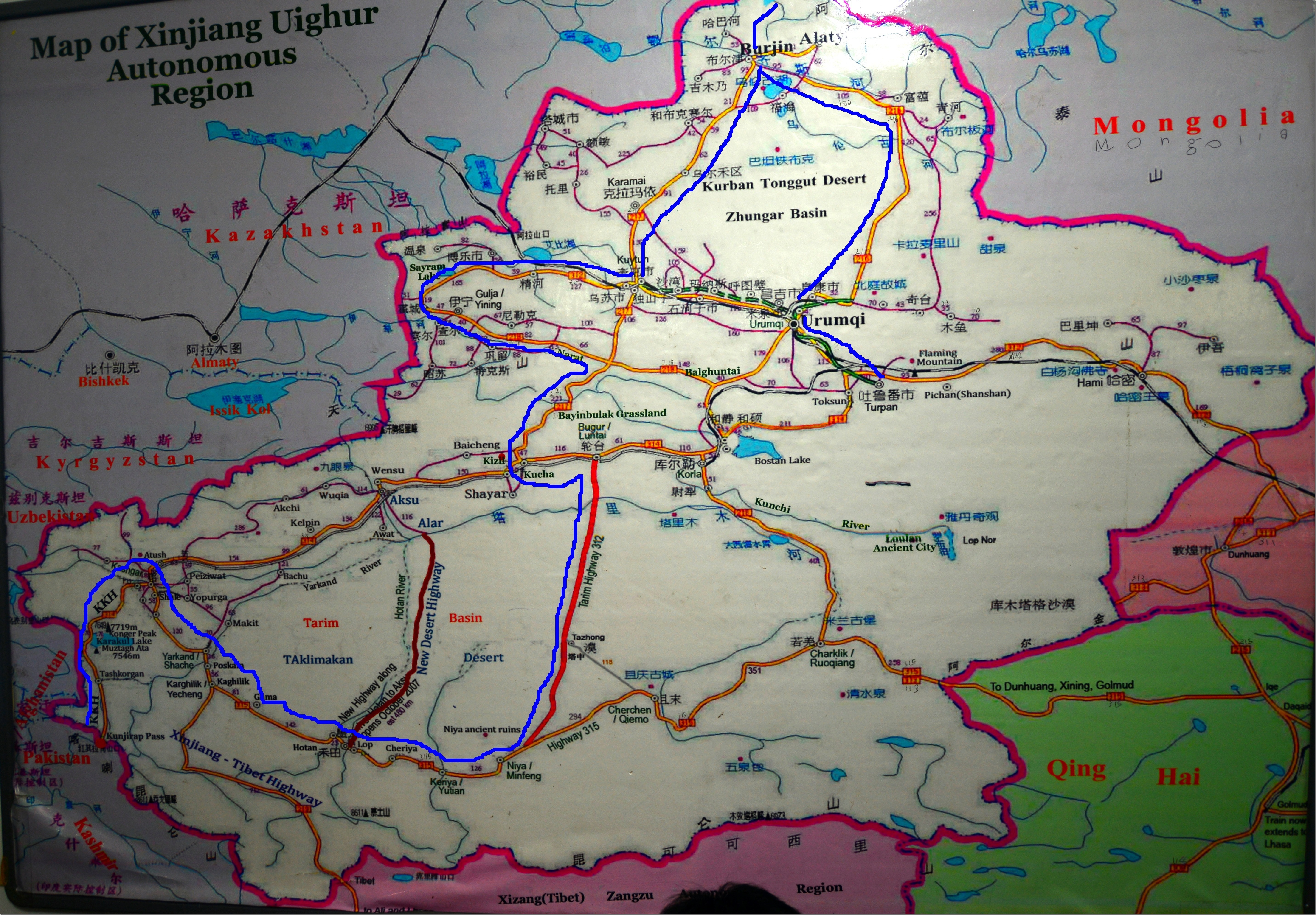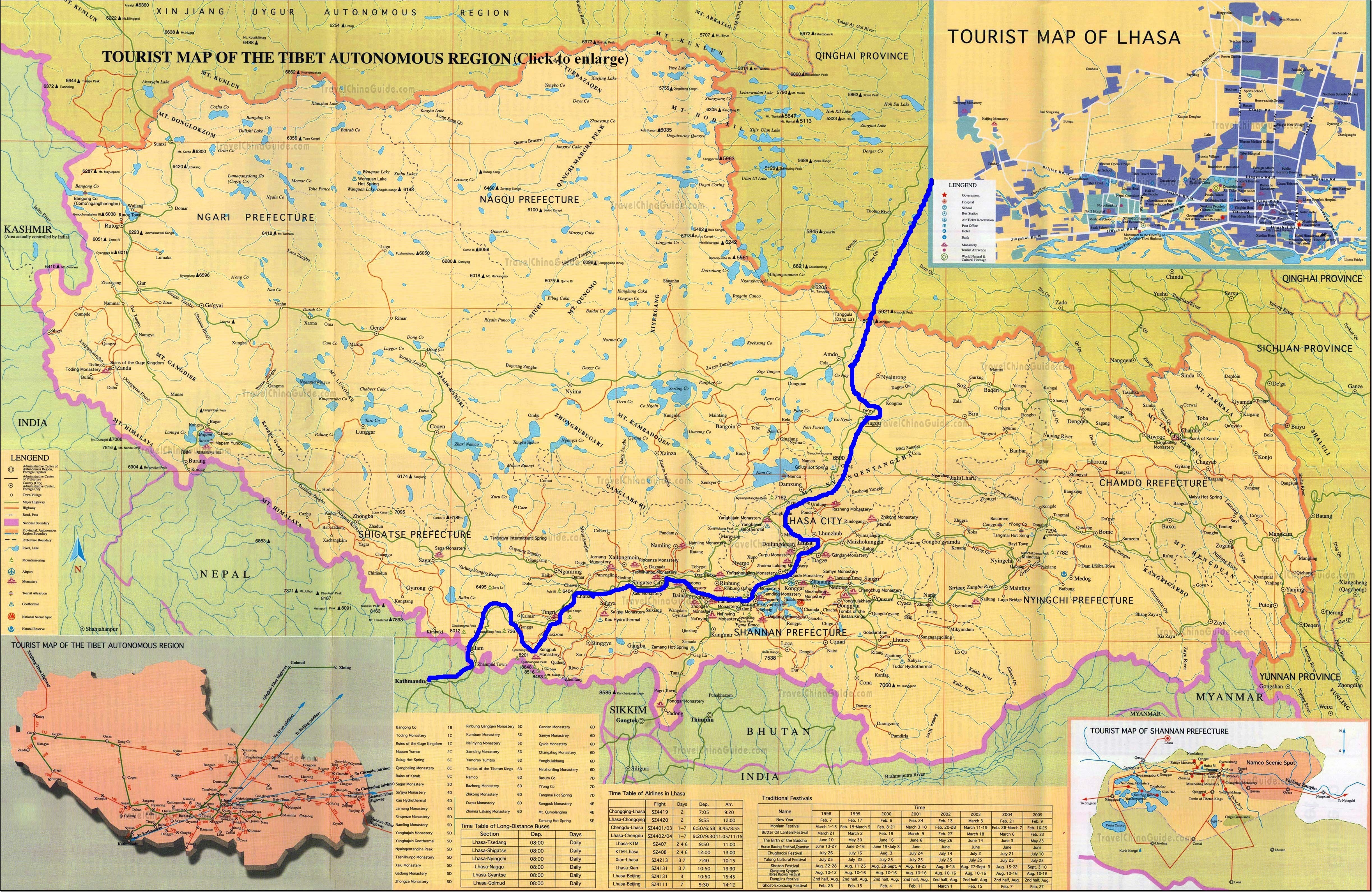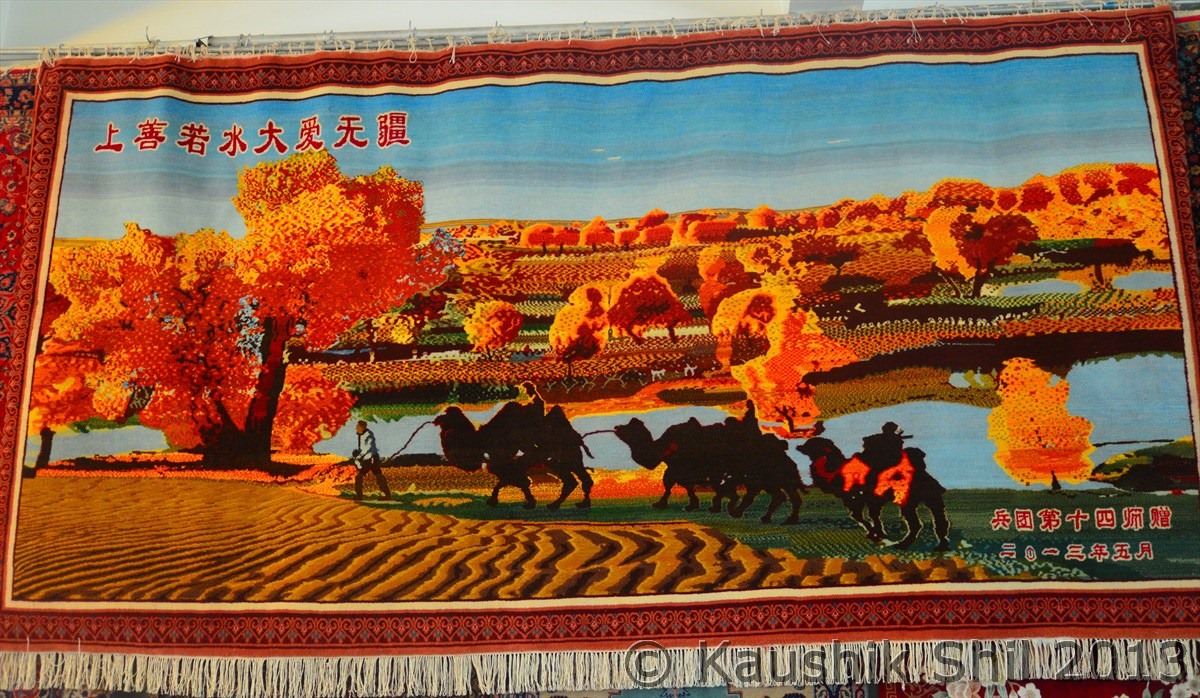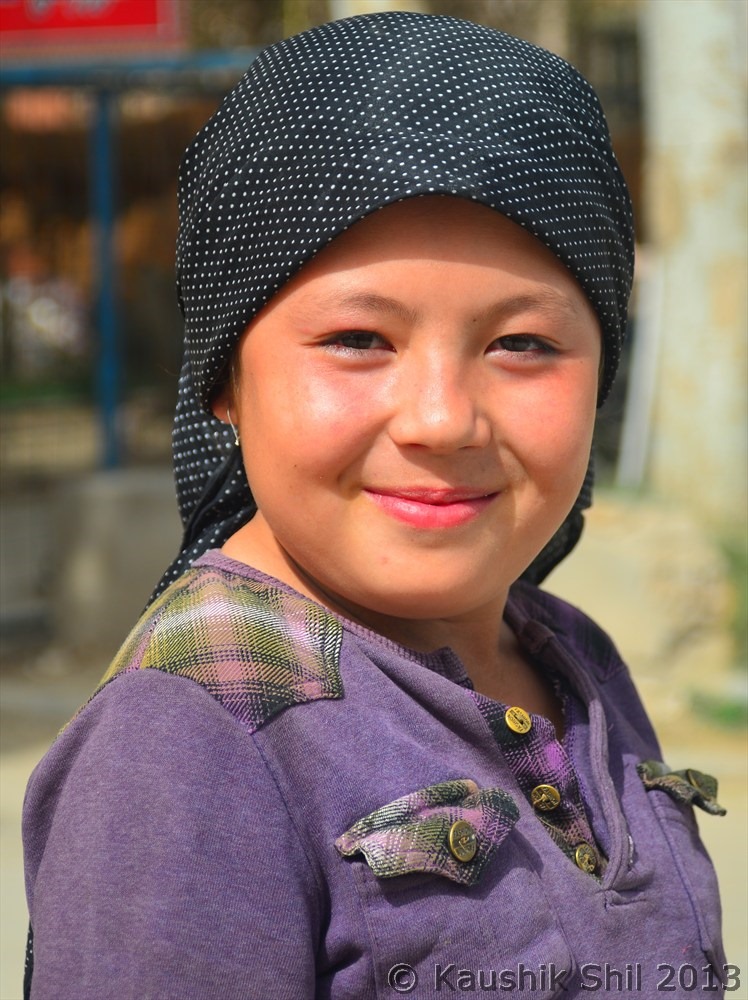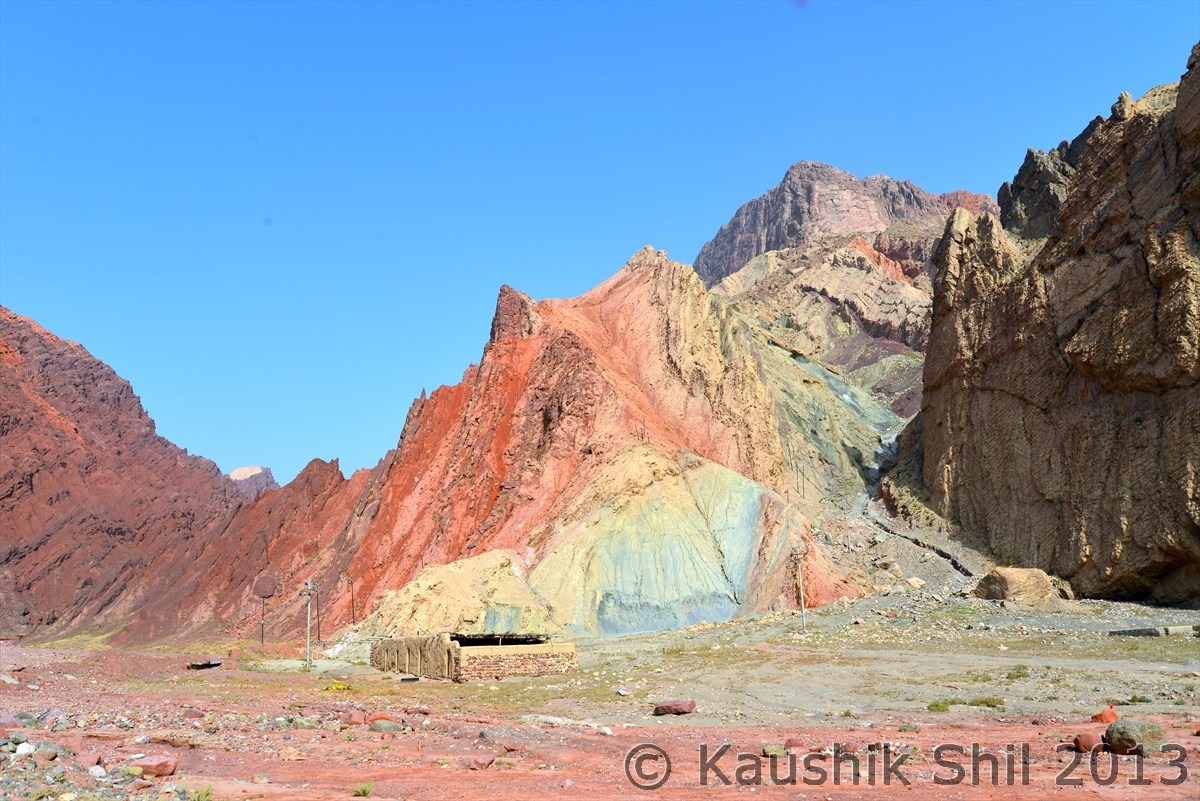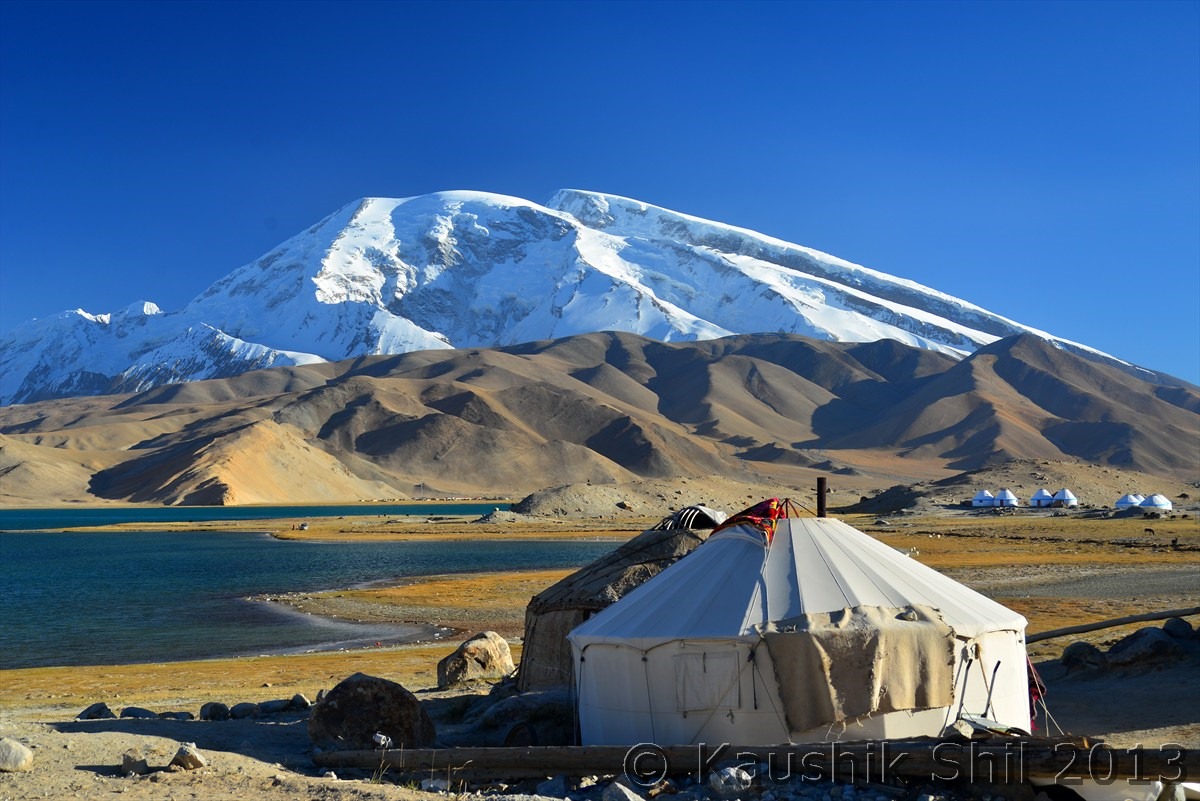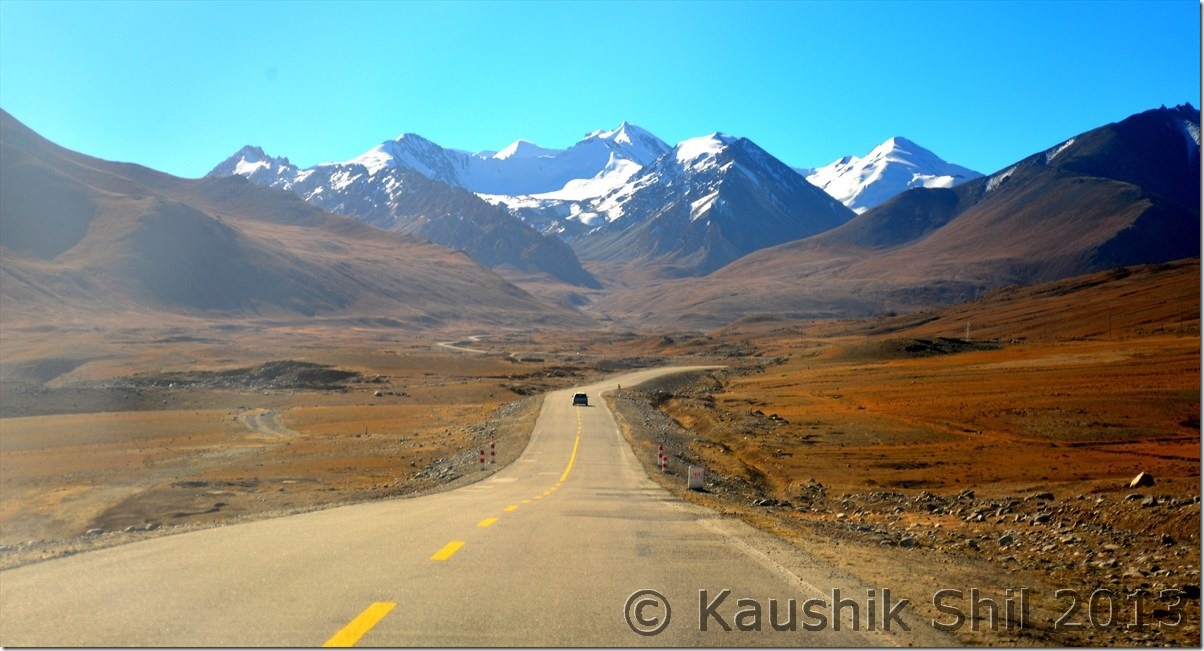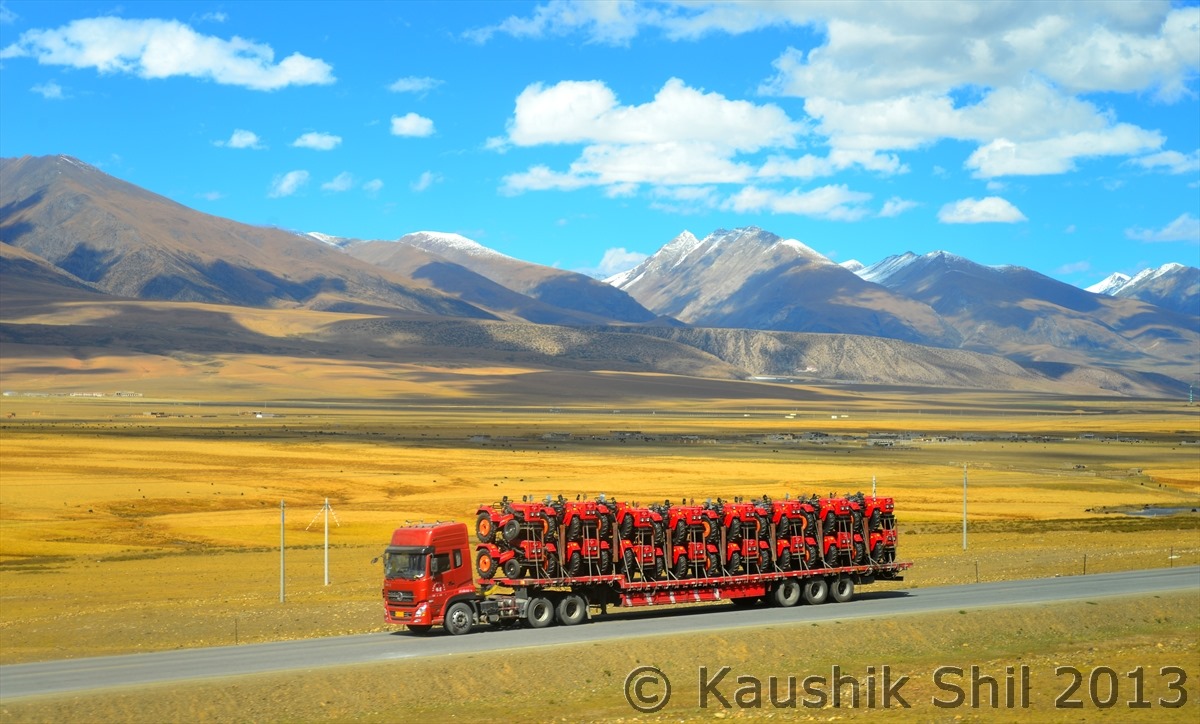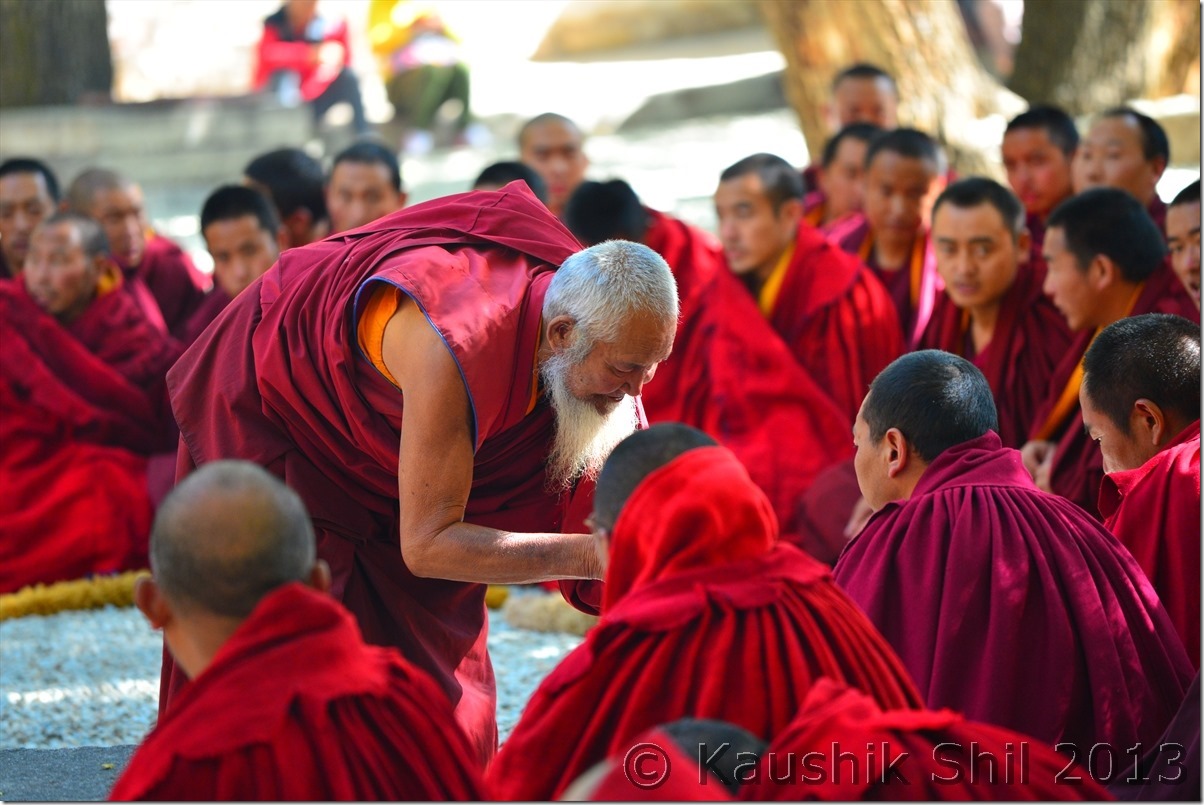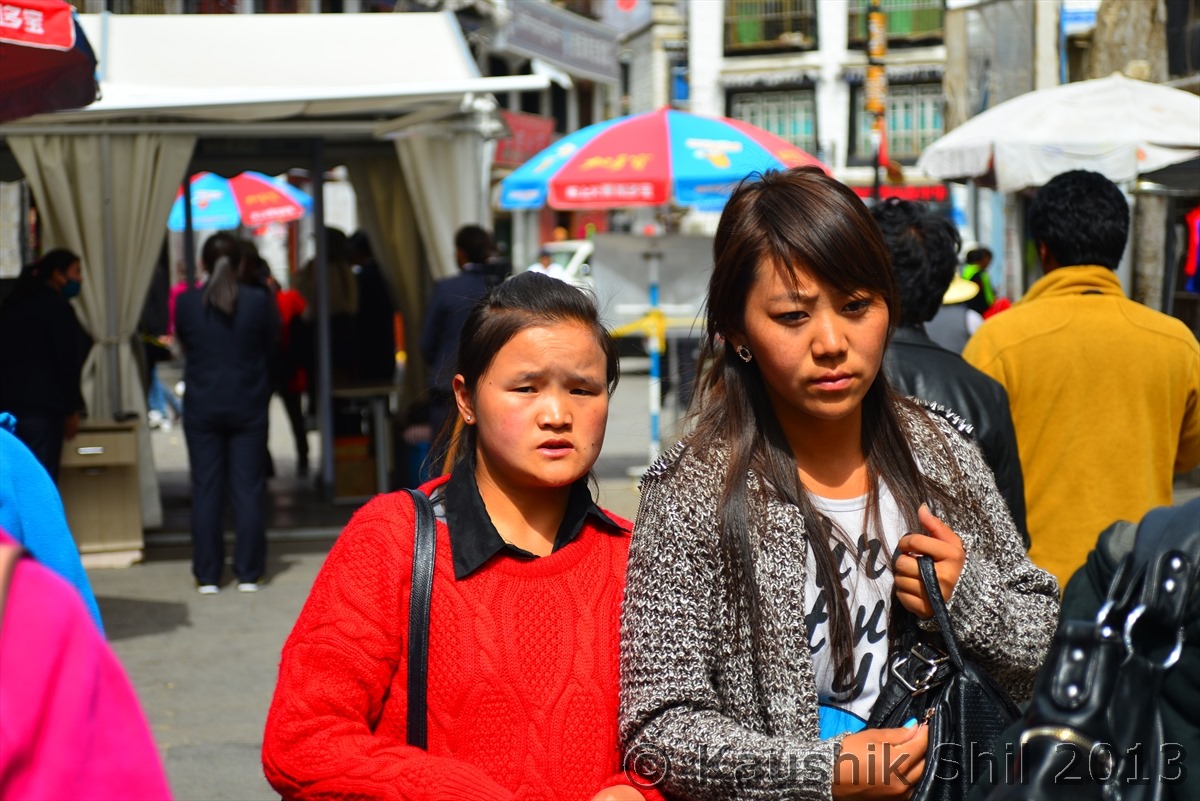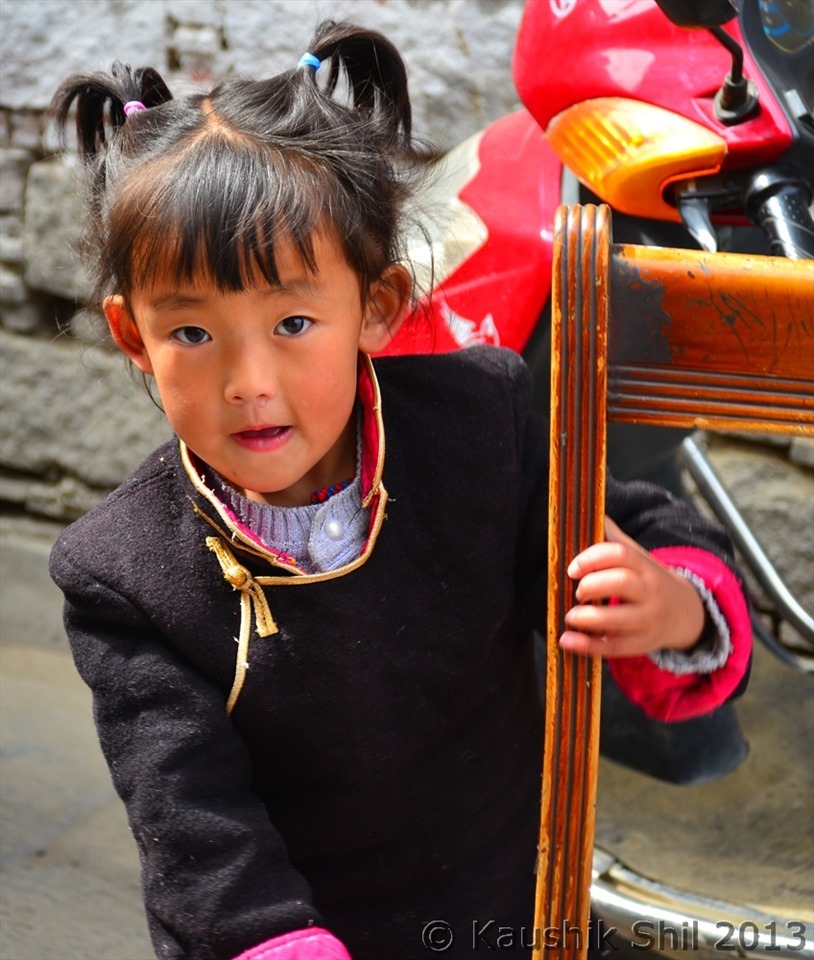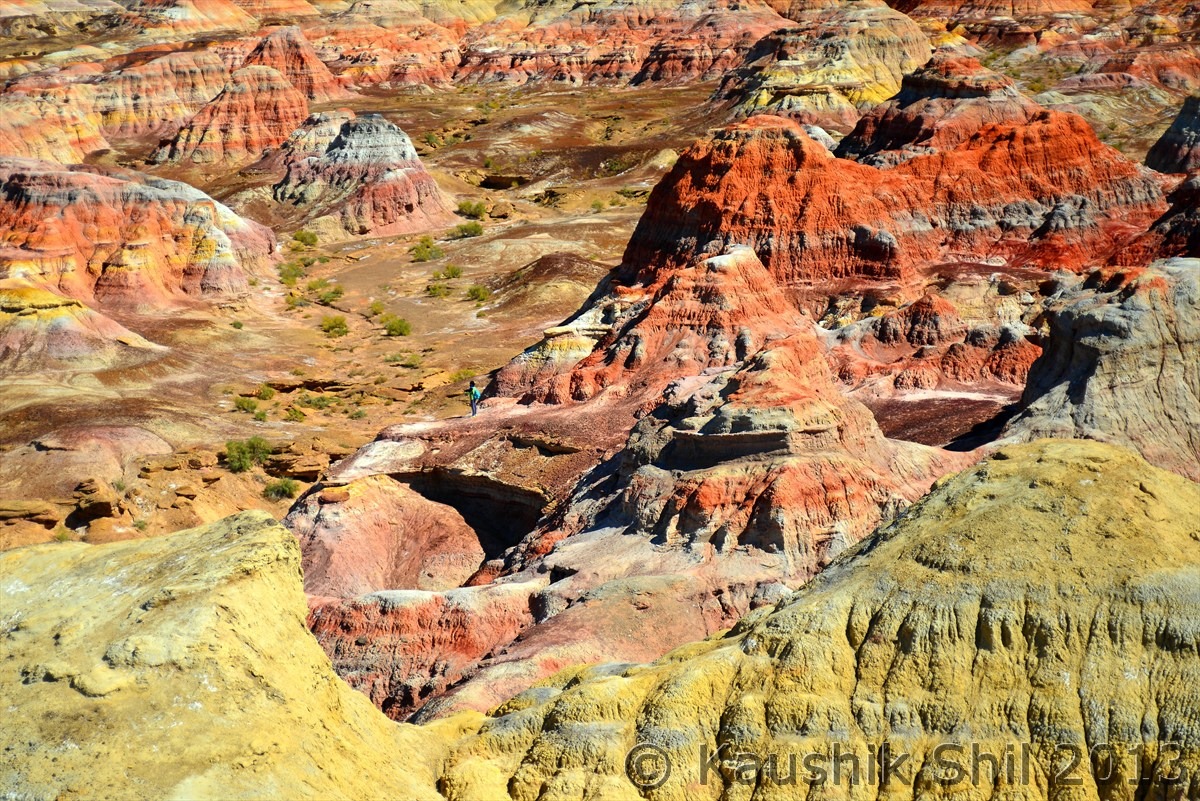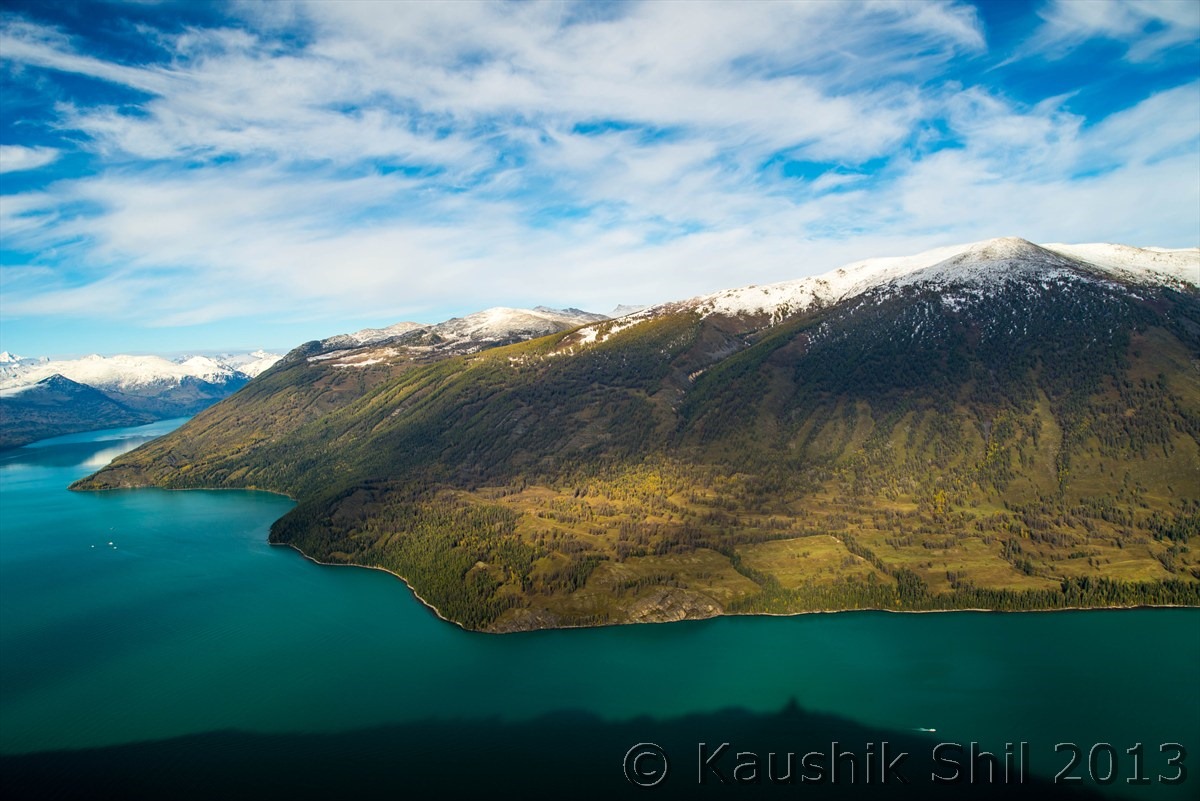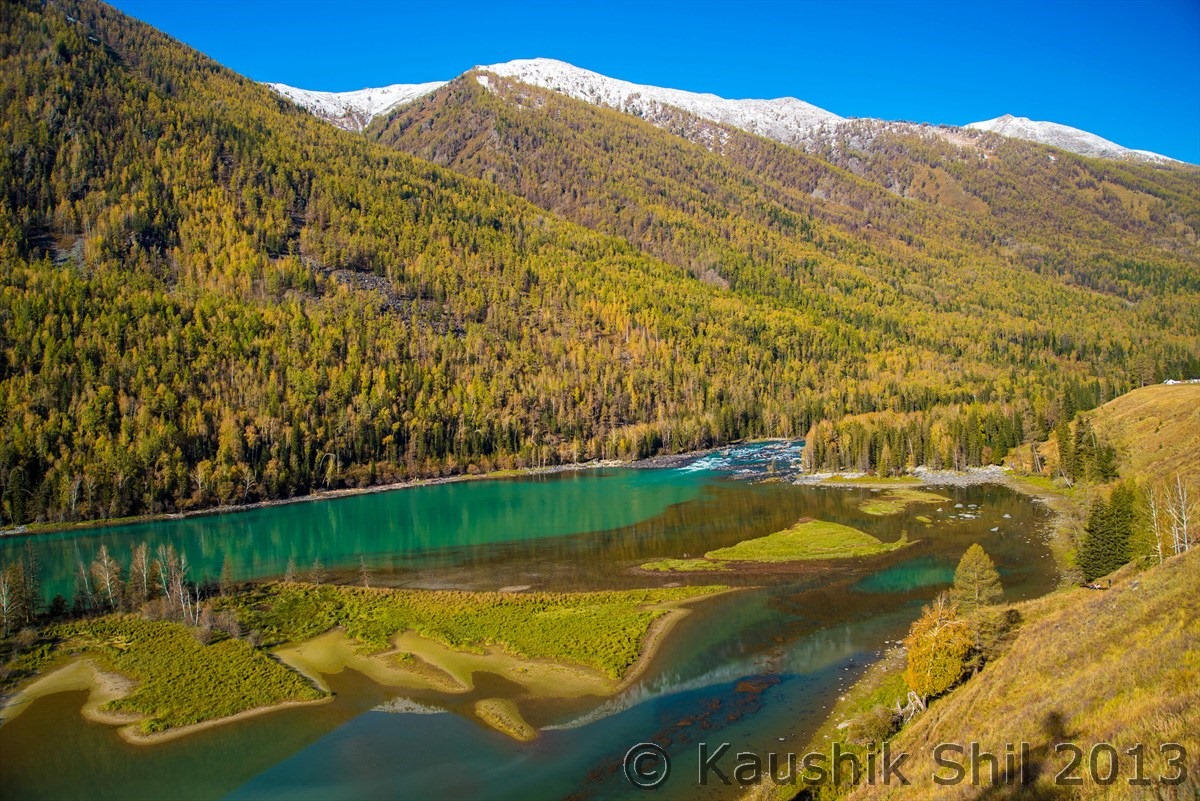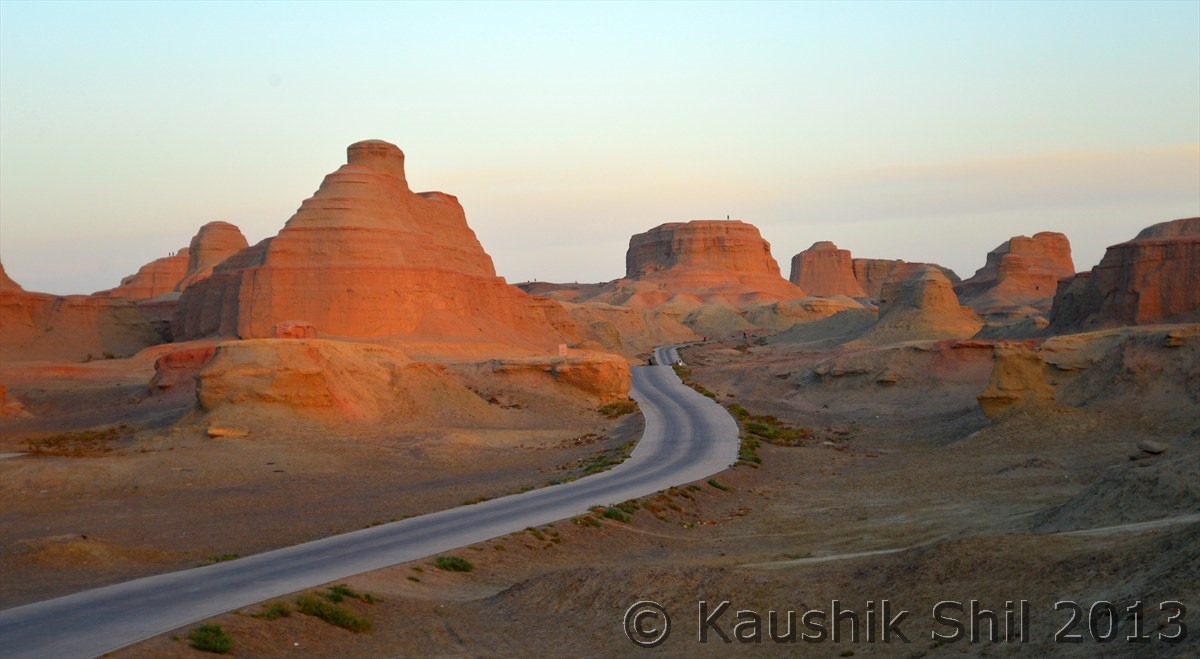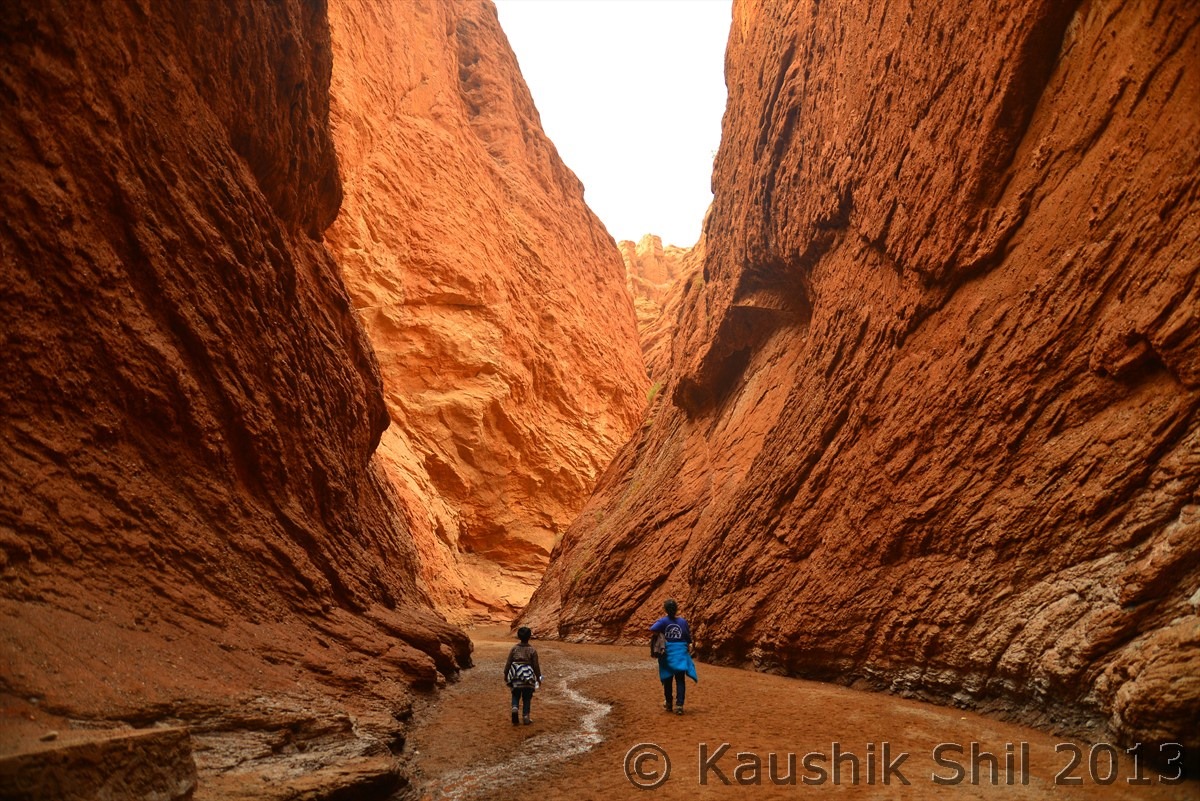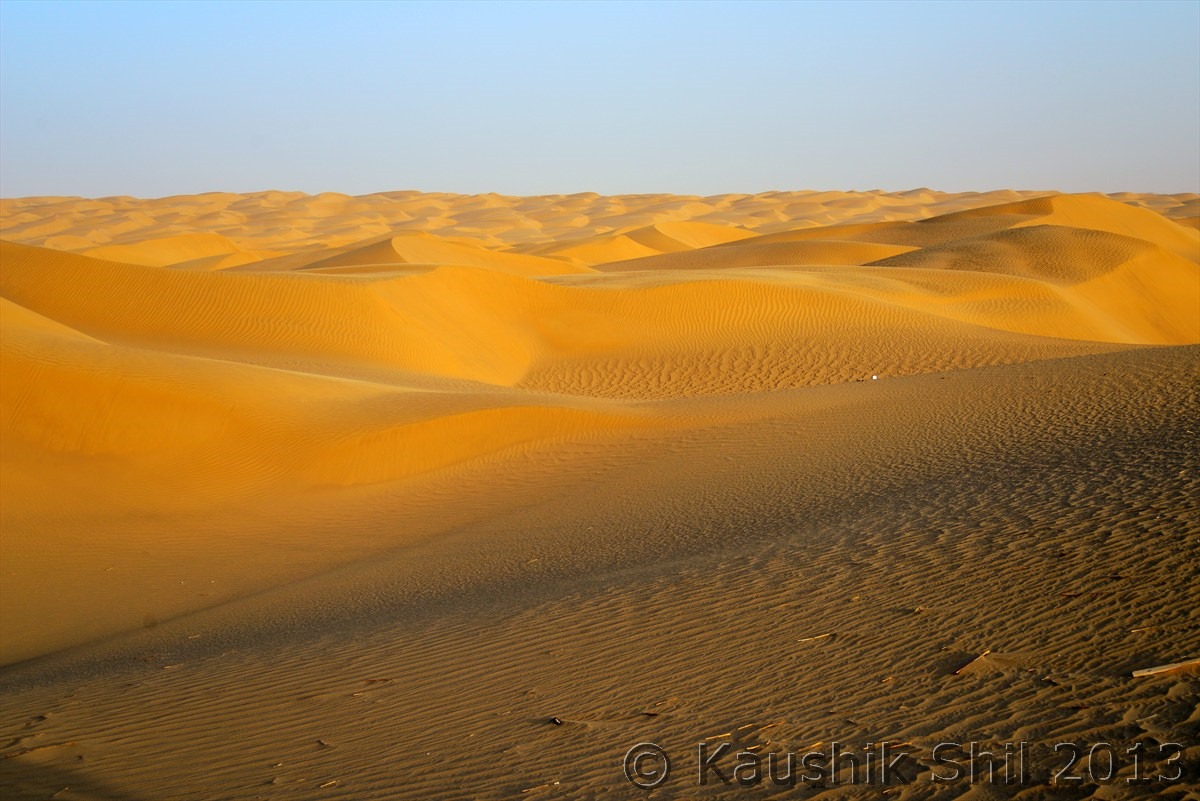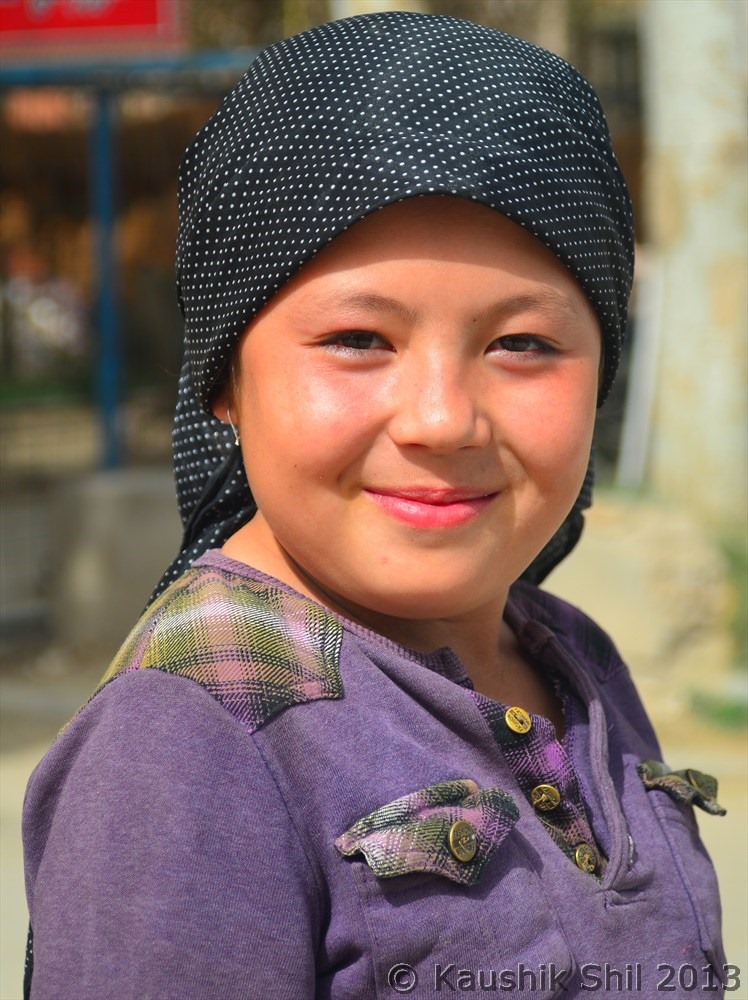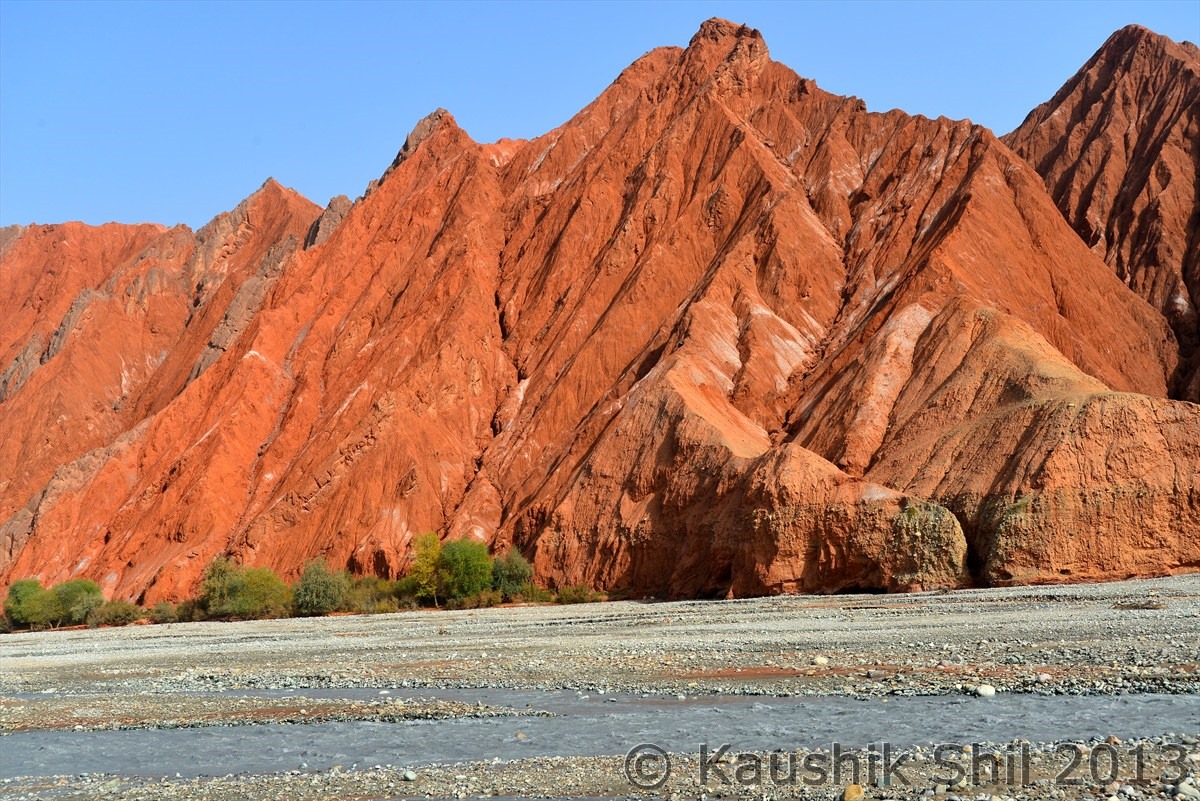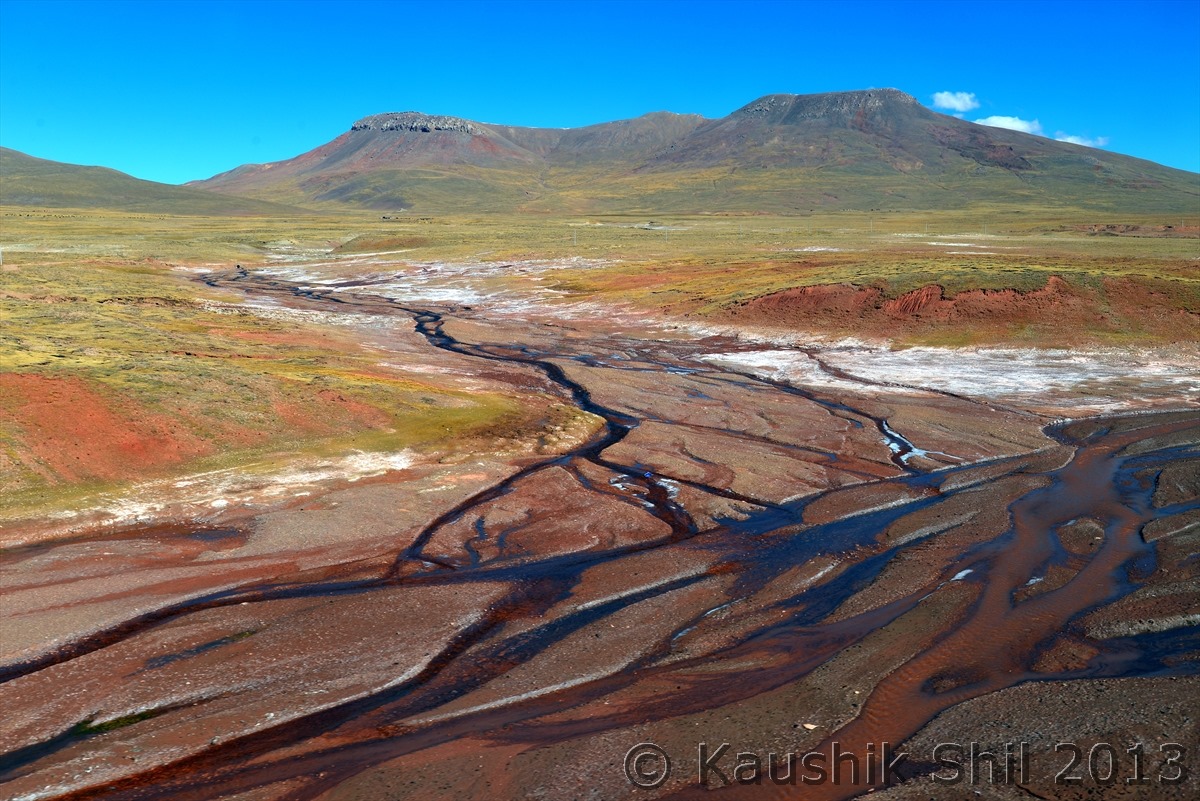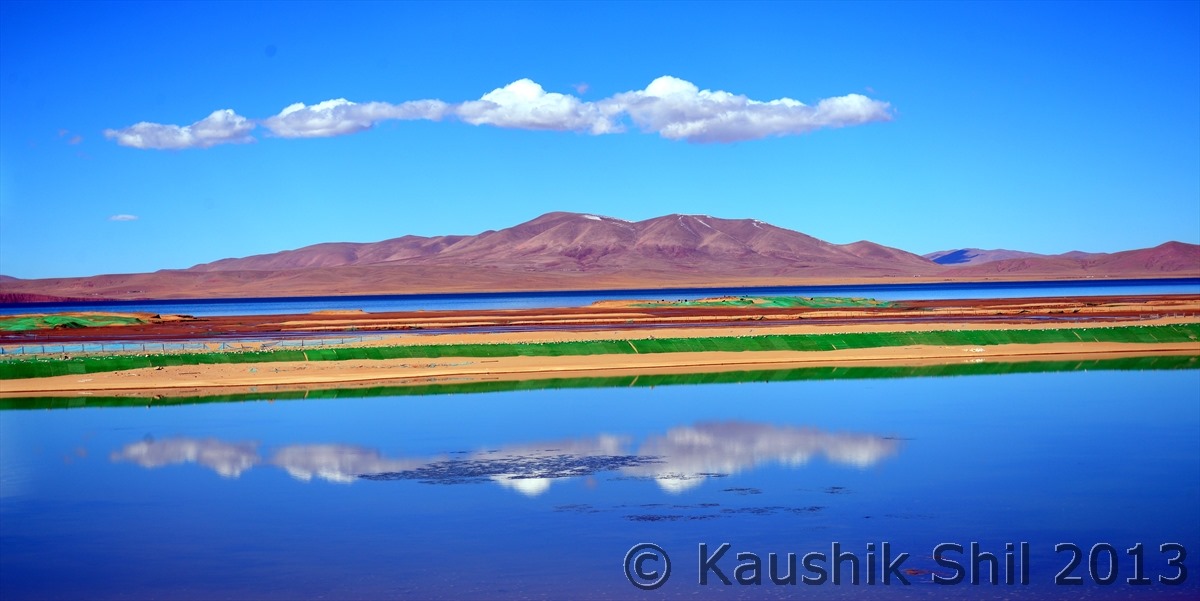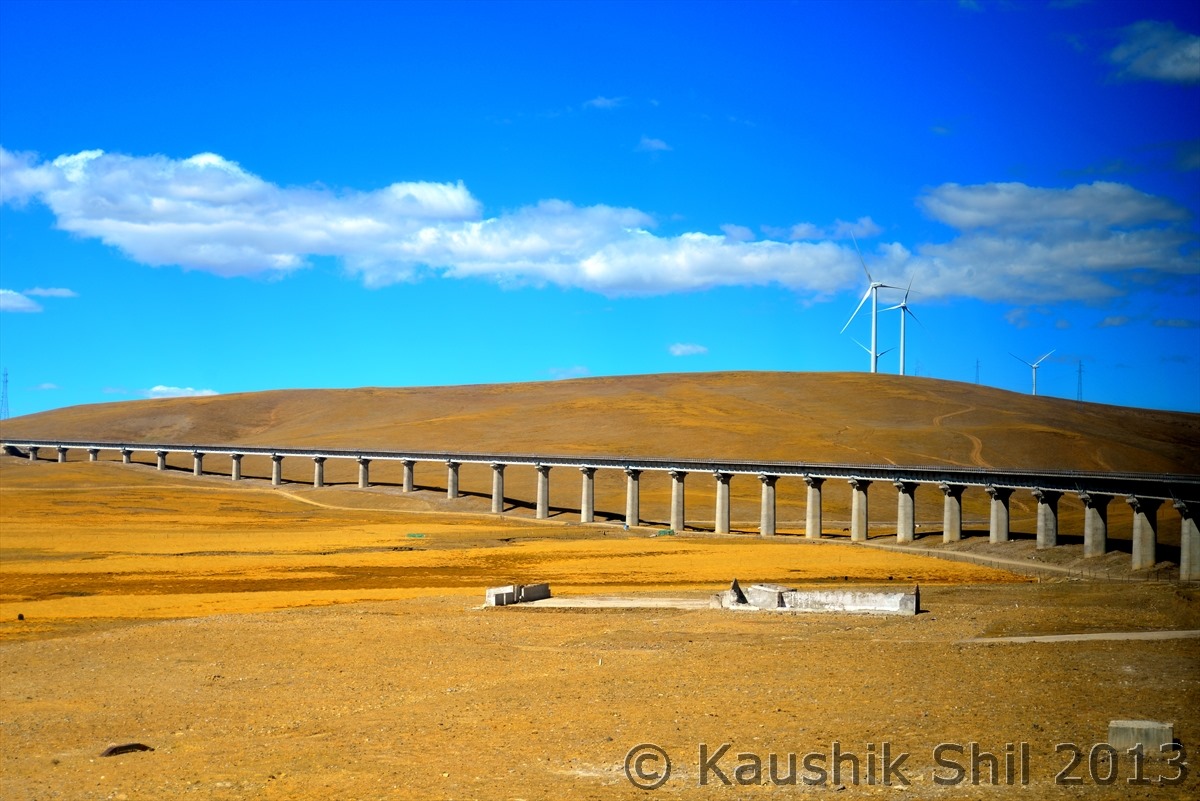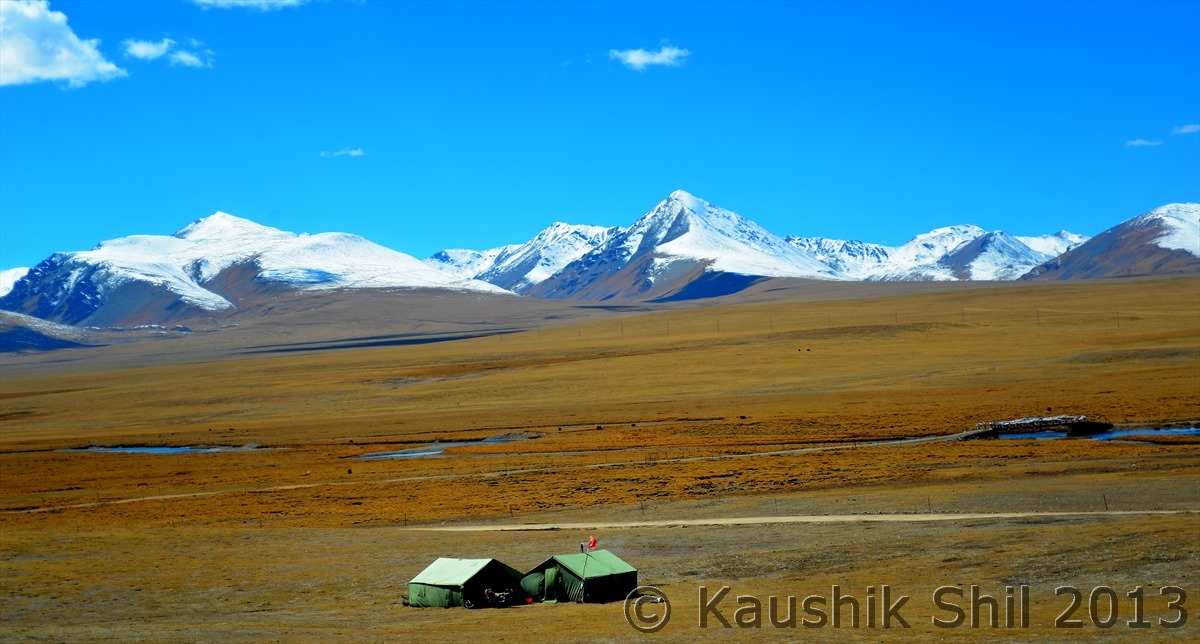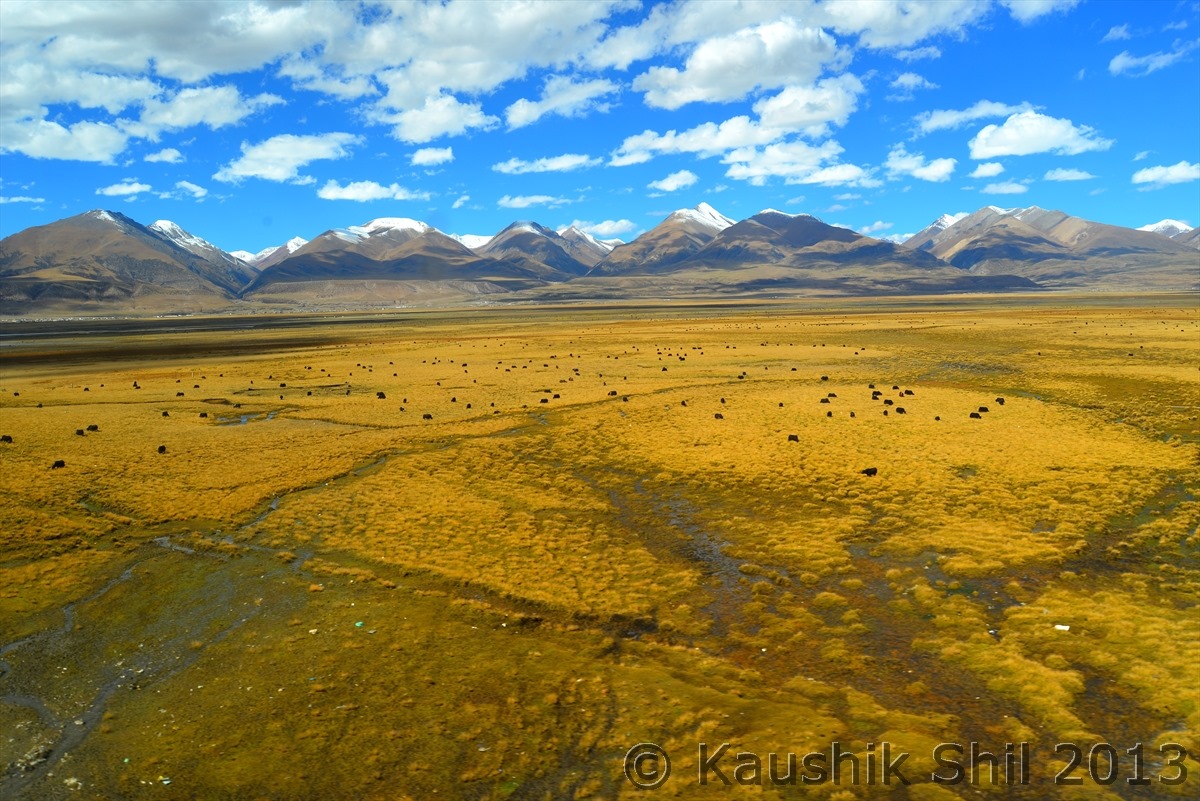Day 0
As we had the flight around 12.30 past midnight of 21st Sep, we actually left home on 20th evening. I sent the snaps of my luggage to all the drivers with whom I planned to travel just to check if that could fit comfortably in the car. We were sure about the size and weight restrictions of flights but not too sure about the train and also if these could fit in the cars. China Eastern had almost no airport presence in Kolkata, we were served from Air India counter and also got the luggage tags and more surprisingly the boarding pass printed on Air India boarding pass. I never had this experience of flying in an airline with boarding pass printed on some other airlines. To my surprise the flight was full and full of Chinese (or may be South East Asian Faces) and though Kolkata is linked with Bangkok, KL and Singapore on regular basis, I think this fight between Kolkata – Kunming maintains a good utilization in regular basis and that’s why they now run it daily. The first shock started from announcement itself as initially I didn’t even understand that flight announcements were being done in English too, never experienced such an accent of English before in my life. Gradually we habituated with that Chinese English which needed strong composition power of your brain to make it meaningful. The moment after boarding the flight, we started feeling we entered into China, the flight was full with Chinese, Announcements primarily in Chinese, Even the LCD displays are in Chinese, felt like in a domestic flight of China, hardly could imagine we were still in an international flight.
The flight path was pretty straight and it just crossed Bangladesh, flew over Assam (Dibrugarh) and cross Northern part of Myanmar to enter China, scheduled flight time was 2 hours 10 mins (same as Kolkata – Delhi) but it reached Kunming in 1 hour 50 mins. China being even wider than US, maintains just one time zone where as US maintains 4. The interesting part is China’s official time follows Beijing time which is located in eastern most part of this big country and all airlines, train, bus runs according to Beijing time. Be watchful when you buy a morning flight ticket specially in Western China, inevitably you have to fly before sun rise and getting into airport would be difficult just because in western side, sun rises at least 2.5 hours after Beijing. This is surprising like many other Chinese customs to us but in most cases you won’t get any proper logical answer to many of these strange rules, my guess it’s a Chinese style of maintaining national integrity and make everyone in a culturally and ethnically diverse country aware that whole China follows what Beijing does. Though debatable, still good in one way when we see so many newsprints wasted in India to create new states almost regularly. Anyway we reached Kunming around 3.00 am in India time which was 5.30 Beijing time, China is 2.5 hours ahead of India. That was actually the last day of Mid Autumn Festival, the airport was quite crowded, Kunming is definitely smaller than Beijing, Shanghai or Guangzhou still having three times size of Delhi T3. China’s growth is surprising specially the way it improved the infrastructure, we traveled 10000km overland in two most backward states of China, yet never seen any asphalt road, all are just made of Concrete, even if it runs 5000 mtr above sea level or through a wetland or desert. Even 3rd / 4th tier towns have 3 levels of ring roads and more than a dozen of flyovers and underpasses. Urbanization is in its extreme and sometimes by ruining the culture and history. Again not sure why it is so and no body could give you any satisfactory answer but my guess is, China really doesn’t have much interest in their rich cultural past, they want to show an ultra modern face of China to the world and might believe their history starts after the communists taken over in middle of last century.
Day 1
One good thing about Kunming Airport is, it’s all in one building, you don’t have to rush from one terminal to other to catch your connections. We approached to Immigration where they didn’t allow us to accompany our daughter, not only for us, for all young kids, the rule was same, he/she has to face the immigration officer alone and understand his / her out of the world English pronunciation, had to answer a few questions like where we would go, why we have come like this and then some more which the kid won’t understand and finally if they wish, they would stamp the passport, a torture in one word! We discussed and decided we won’t tell anything about Xinjiang / Tibet in immigration unless we were forced in such situation, so kid was prepared to answer correctly what was expected from her and we were not asked much, our passports were stamped, we collected our luggage and then realized no body around us even know that there are few more language exists in planet Earth apart from Chinese. Our only hope was the display boards those were displaying alternatively in English and Chinese. We somehow reached Domestic areas but then didn’t find anywhere any board where our flight number was displayed. We still had enough time almost 3 hours, so just relaxed, tried to find drinking water, only hope was again the signs, now we found the water but it was boiling, everyone else sipping it like a cup of coffee, we tried hard to find something we are aware of as normal water (even cold would do) but didn’t find any. So we also tried the same, sipping the hot water, good it killed some time too. But then we needed to check in to our domestic connection to Urumqi but no display board showing which counter to proceed for check in for our flight and no check in counter had any display board. We started asking the China Eastern Staff, she looked carefully to our ticket print out for few mins and then showed us some counter in other side, we gone there but then I realized she didn’t see the back page where the domestic flight detail was printed, so either she didn’t read or she couldn’t read, we asked someone else, again a blank expression after looking at the ticket, gone to a third person, she gave us an expression close to laughing Buddha, now we started feeling the heat, I started asking in English rather than showing the print out, asking in loud voice so even if someone out of the airport (who knew English) could hear me. Now someone directed me to another person, seems to be the best in English, as usual she couldn’t understand much what I asked, I didn’t understand anything she was trying to explain, but she at least asked me to go to counter 1, yes at last got a counter number, now their the lady never heard the airport named Urumqi (Urumchi), she said no such airport is there in China, I tried my best to make her understand it’s there and China Eastern issued me a ticket for that, tried with Airport Code URC too but still no result, then I tried with the province name Xinjiang (Shinjiang) and got first sign of some success, she was surprised that some foreigners coming to Kunming and instead of going to China, trying to go to Xinjiang, she smiled and asked me “you wanna go to Wulumuchi right?” Oh God, I learnt in hard way Urumqi is actually Wulumuchi in China and then even if it’s not, I was desperate to get out of Kunming, so I said yes by nodding my head fast. She took my bags for check in and asked me to go to security. Then I first understood check in process in China is to some extent different, you can check in using any counter of the specific airlines and luggage scan for check in bags happen after issuing the boarding pass. This is in general an efficient process than scanning your luggage separately but issue is if something they find objectionable you might need to come back to check in / luggage handling area from the secured area which is another hassles, I had to go through that once and while doing so I almost lost my passport but that was another story, will write about that later. We crossed the security, inside bought a 500 ml mineral water bottle in 14 CNY, costliest water I ever drank but no other option if you don’t want to drink boiling water.
We boarded the flight for Urumqi and fortunately it departed at right time, it had a half an hour stop at Jiaquan but all had to get down from flight, again didn’t understand much why so, (It actually takes more time to get down, collect temporary transit pass and then again come back to flight, as a whole its more than the scheduled stoppage time) but when back we found they cleaned up the flight and even took the snacks we left unfinished. The flight goes to North from Kunming, cross between Chengdu and Chongging and fly North till Lanzhou before it turn left and cross Gobi Desert by the side of China – Mongolia border through the Northern side of Kunlun Mountains and finally reach Urumqi. We reached almost on time and Urumqi seems to be a relatively new city, around 300 years old (Yes its new comparing to historical cities of Hotan, Kashgar or Turpan all of which would exist even in 2000 BC).
I arranged two different drivers one for Northern and other for Southern Xinjiang mainly because it’s such a big province, it’s better to travel with someone who knows the area well, otherwise it’s like hiring a driver from Ladakh and travel to Madhya Pradesh with him. To do that I had to rework in my plan as I need to choose a place where first person would drop me and second person would pick me up without much of additional driving. The person whom I hired for my Northern Xinjiang trip was an Uighur in his mid 30, very nice person, speak excellent English and most importantly have guide license that means I could save a lot as in some places for foreigners, a guide is must. His name was Ablajan and he was right there in Airport with his Nissan Bluebird to pick me up. He just came from another long trip with couple of German tourists who were doing there China to Italy trip overland and he just transferred them to Kyrghiz border. I must say he is a very nice host, entirely professional and clearly told me he never took any Chinese Tourists even if they are ABC (American Born Chinese), most of his tourists are Europeans, he never handled Indians but knew about Gandhi/Neheru and the soured Sino-Indian relationship across Tibet/Ladakh border. Anyway from first day I felt not everything is right between Uyghur’s and Chinese, Ablajan took me to a Uighur hotel (actually I never been to any Chinese hotel in my entire trip except one or two places where there was no option). We picked up lot of dry fruits, cakes, cookies and most importantly few Nans (Bigger version of our Roti) and quickly collected local SIM Card and most importantly exchanged dollars to CNY from black market as there were lot of people from Kazakh/Kyrghiz/Tajik who run this money market in this part of China, much hassle free than spending your 4/5 hours of prime time in morning and rate wise even slightly better than what Bank offers. Ablajan made all these super smooth and we completed all these in an hour or so. Ablajan also gave his Wi-Fi hotspot which was of immense help during the first week of travel as long as I was with him. This he bought specially for his clients as most want a hotel with Wi-Fi where as in China even if it has Wi-Fi, it’s not easy to connect and speed is not up to the mark always. Now with phone and data connection, having local currency and some foods for next day’s long journey we were ready for dinner, again it was Ablajan who saved the day for us, with lots of effort we found some rice and chicken to fill our stomach without hurting our test buds a lot. Now it was the time for bed for first day of our trip. Tomorrow we would drive for 750km, one of the longest drives in our whole trip.
At Kunming Airport:
About to Fly out from Kunming to Urumqi – A long Five and Half Hours of Flight:
At last landed at Urumqi Airport:
Day2
We got up early, Ablajan was very disciplined person and punctual, he told us on first day we would go by Beijing time and by 9.00 in morning we would be checking out and in lobby, the problem in Xinjiang is, local Uyghur’s actually set their clock as per unofficial Xinjiang time, they don’t follow Beijing time, so once you are in an Uighur hotel, 9.00 am means 7.00am so that’s the earliest when you can expect breakfast. So that’s the earliest time we can set for us. We took quick breakfast with the help of breads and some noodles and by 9.30 we were off.
The morning was awesome, we were greeted by brilliant weather, heard from Ablajan, last day was cloudy and raining there, from hotel room we could see the first rays of Sun touching the Tienshan Mountain ranges, actually Urumqi lies just in Northern side of Tienshan (Heavenly Mountains) and receives lot of rainfall and snow from moistures brought in from Siberia/Altai region, but just south of Tienshan till Kunlun, it’s absolutely desert, the great Taklamakan and the area receives very less rainfall. Urumqi is strategically located for ancient migration from Tarim basin oasis in south to grassland of the nomadic tribes in north crossing the Jungar Basin. However Urumqi is considered as a recent settlement with history goes past maximum 200 years and didn’t play any role in early trade route which passed through south east of town. Now its been a modern Chinese city with tall buildings and lots of flyovers and heavy traffics even on a Sunday morning. We were surprised to see the traffic at 9.30am (which is 7.30am local time) in a Sunday morning in Urumqi.
If you see the map below you would easily understand that we are trying to reach from Tienshan mountain range to Altai mountain ranges in North during this day
The route as I mentioned was long and there are two main highways of Northern Xinjiang meet at Beitun, Highway 216 going through eastern side and Highway 217 going through western side of the big centrally located Gurbantunggut Desert which is connected to Gobi in Eastern part towards Mongolia. We planned to go through 216 as we wanted to see Multi Colored Bay, a fascinating danxia landform of Jurassic age with many astonishing colors and specially in morning and evening it’s certainly a photographer’s delight. But the location is odd for staying a night to enjoy the sunset or sunrise as there is no place to stay nearby, you need to camp yourselves. Still we decided to have a look at this place but paid hefty price of taking highway 216. It’s basically passes through the coal rich region of Xinjiang and movement of coal trucks are too heavy to make it not so pleasurable driving experience. We stuck in a traffic jam here and lost 2 hours which was critical for such a long journey. Initially the landscape was fascinating as you will have Tienshan ranges in your right but slowly when it enters the desert, it becomes little boring. Add to the worry, out of 750km road, at least 100km roads are being re-laid and traffic were diverted through an off road which further slowed down the journey. We didn’t understand why Chinese people couldn’t repair every 5/10km of short stretch instead of closing 30/40km at a stretch and made it painful diversions for the motorists. The lack of information is another big problem, you would hardly know which roads are under maintenance and when they would be completed until you really hit there.
We reached Multi Colored Bay quite late around 2.00pm after all the traffic jams and spending around an hour we had to rush to our destination to Burqin which was still somewhere around 350km away. The desert landscape continued till Fuhai county from where you would get first view of Altai ranges and landscape started turning to green with emergence of Irtysh River which is only river in Asia flowing North to drain into Arctic Ocean, the highway turned west through northern rim of desert and you would see in your right the snow peaks of Altai and lined up poplar, elm and willow trees with Irtysh flowing beside you all along. From Beitun the main highway 216 turns North towards Altai City, the capital of Altai prefecture where as we continued straight to Burqin, a nice small town with European touch which looks completely non Chinese and pleasure to your eyes. We reached quite late at almost 9.30 in evening and after such a hectic drive of 12 hours, didn’t have any intention of trying Chinese dinner, we understood the importance of carrying Uighur Nans, we just have our dinner with nun, fruits and tea. We were tired and gone to bed as quickly as possible with a promise of better tomorrow.
Urumqi – made its place in Guinness Book of World Records as most remote large city from any sea in the World, located at 2250 km from nearest coastline, farthest city from Sea
Urumqi is greeted by first ray of Sun on Tienshan Mountain:
Urumqi – Modern Chinese City and Capital of Xinjiang:
Amazing Colors of Multi Colored Bay, Danxia Landform:
Amazing Colors of Multi Colored Bay, Danxia Landform:
Highway 216 – still going through Gurbantunggut Desert but approaching towards Fuhai County and far away Altai Range is getting visible:
Bacterian Camels crossing highway 216:
Our Hotel in Burqin:
Previous: Things to keep in mind
Next: Day 3
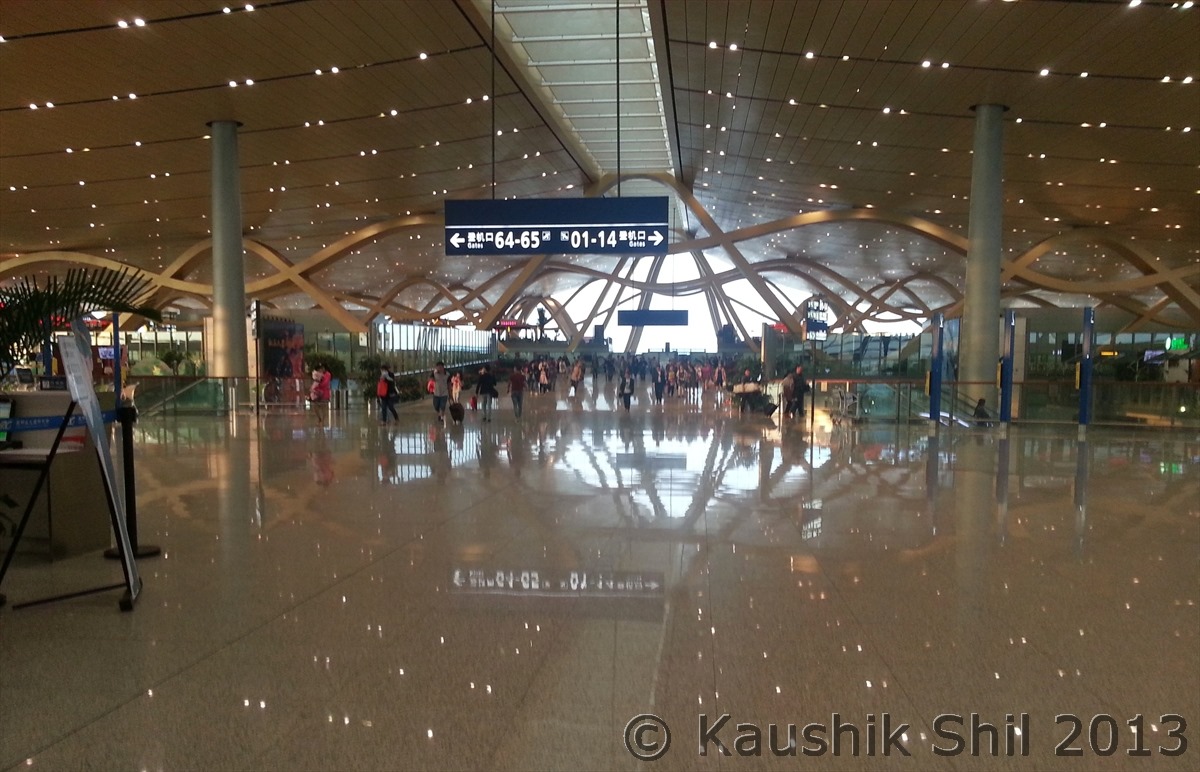
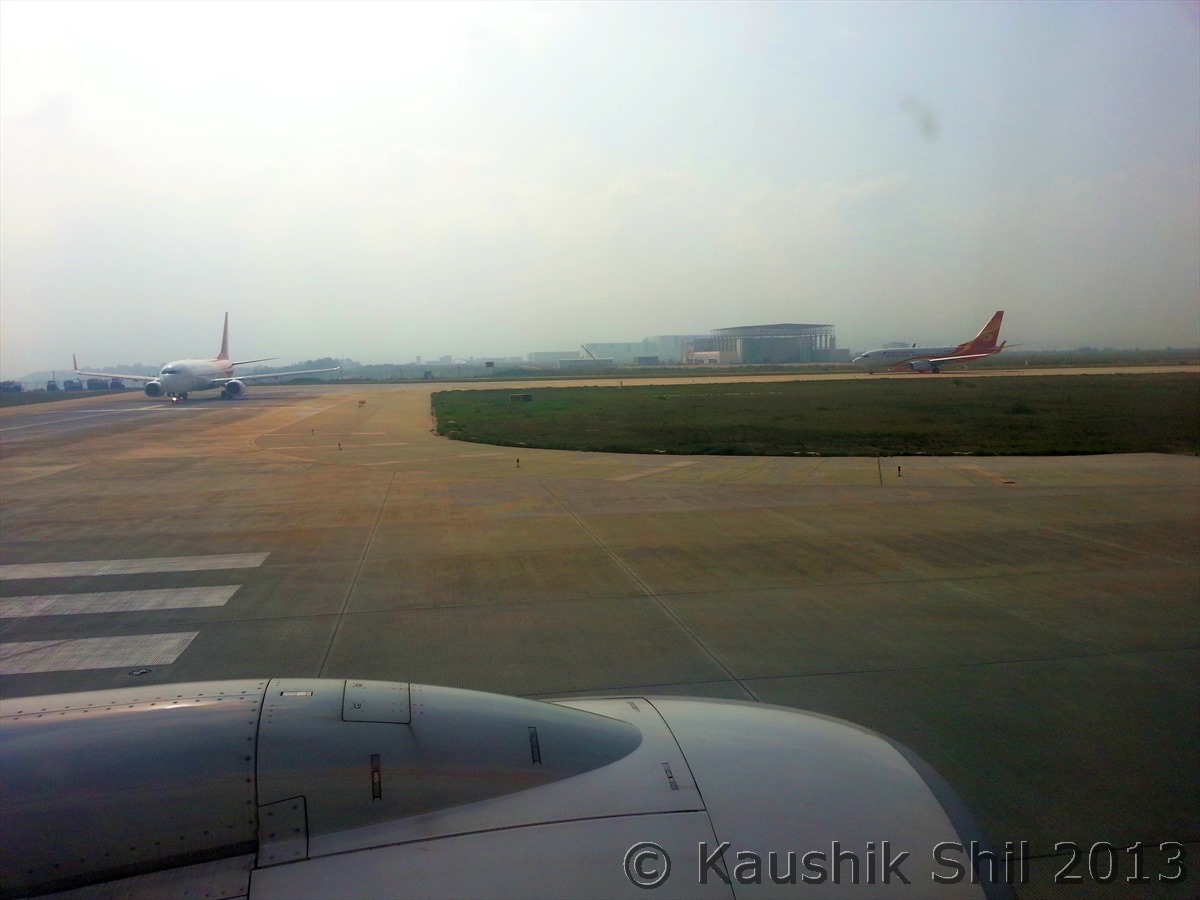
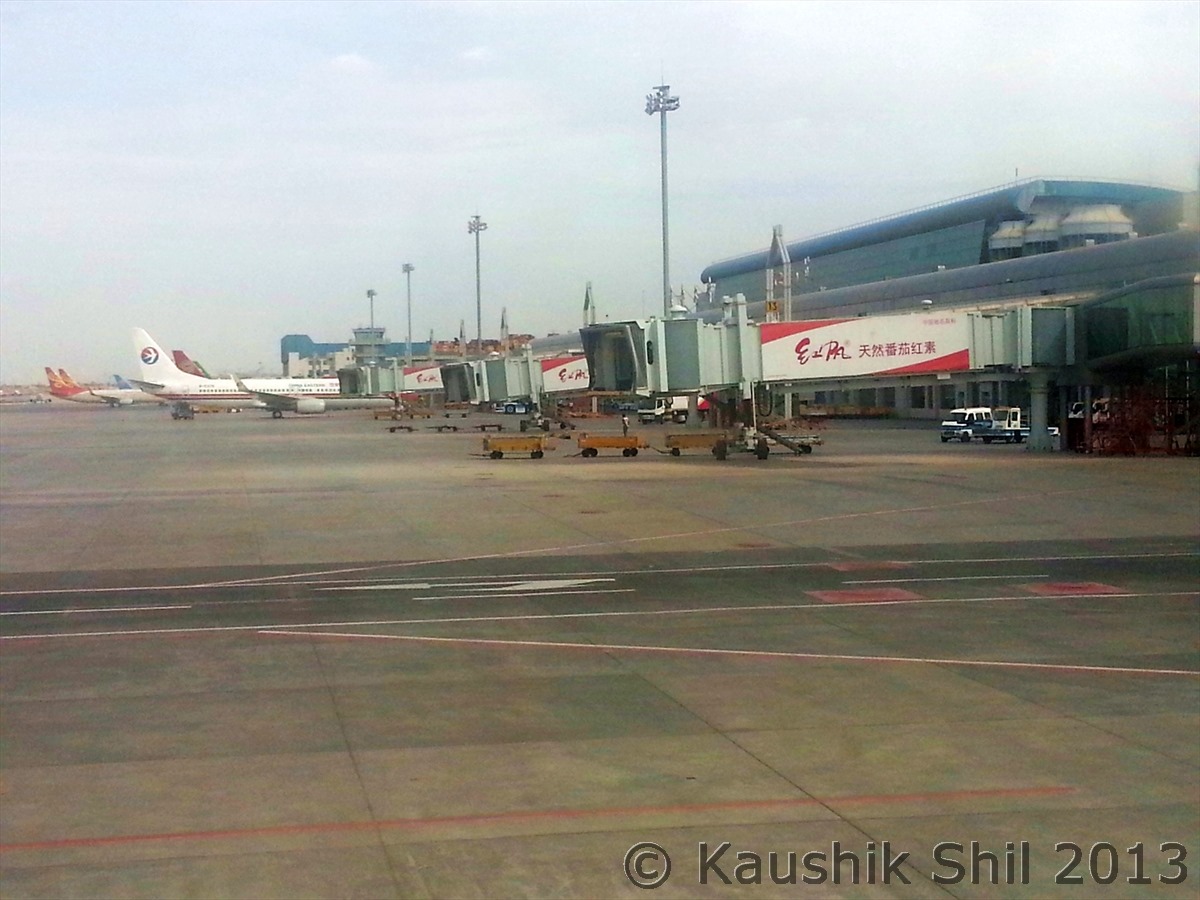

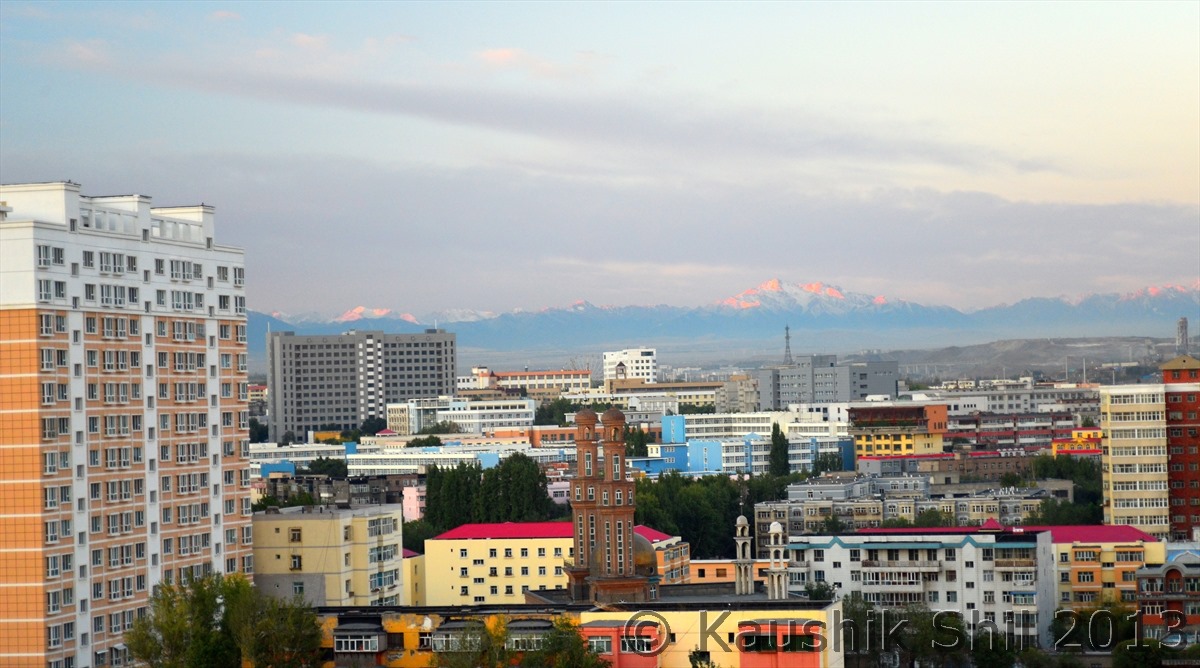
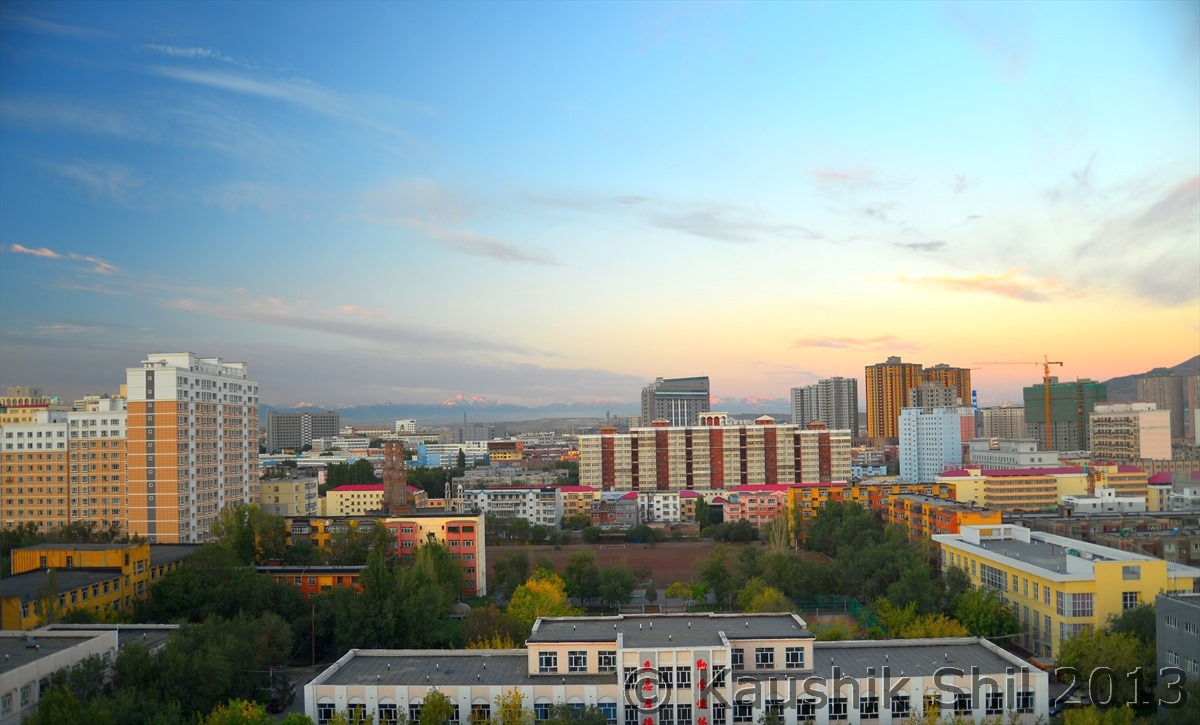
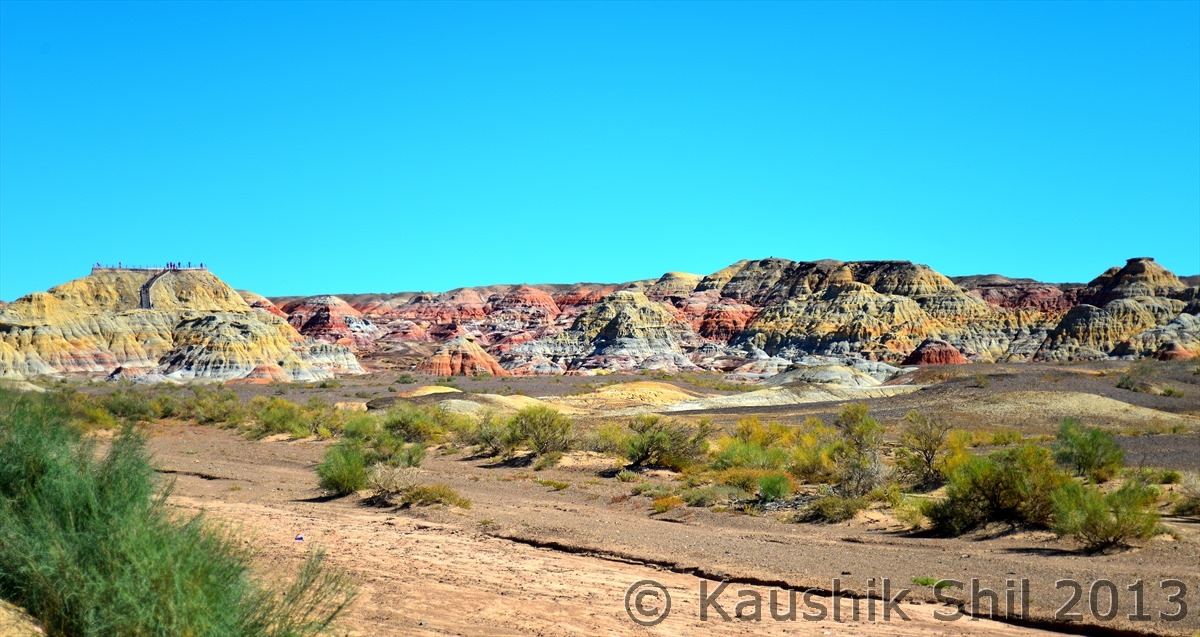
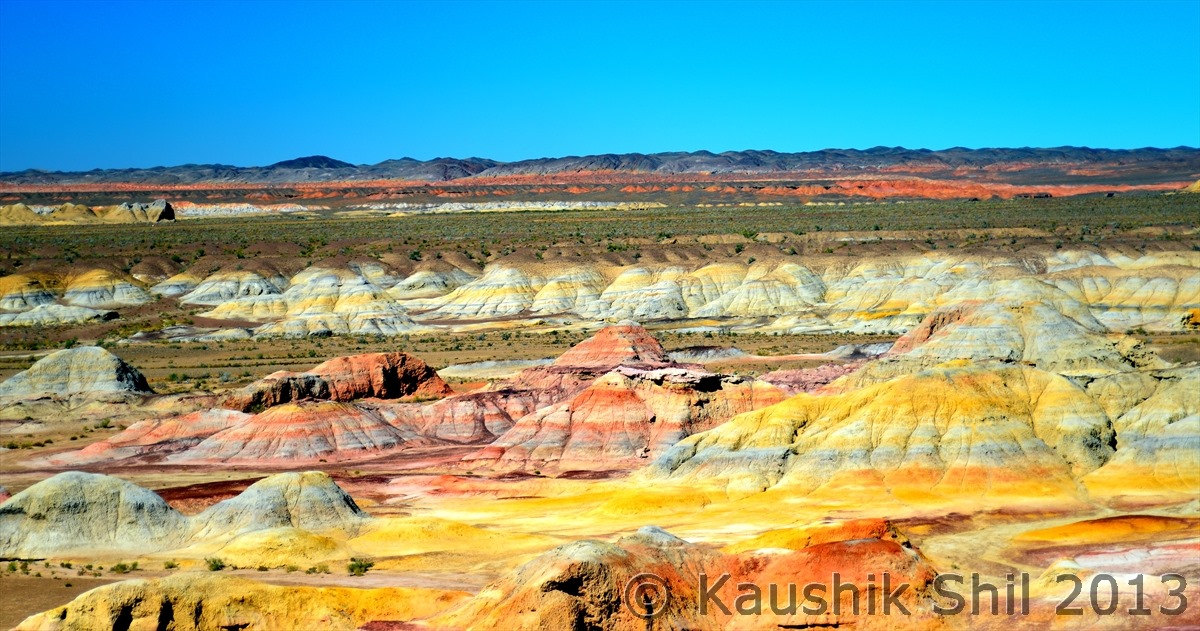
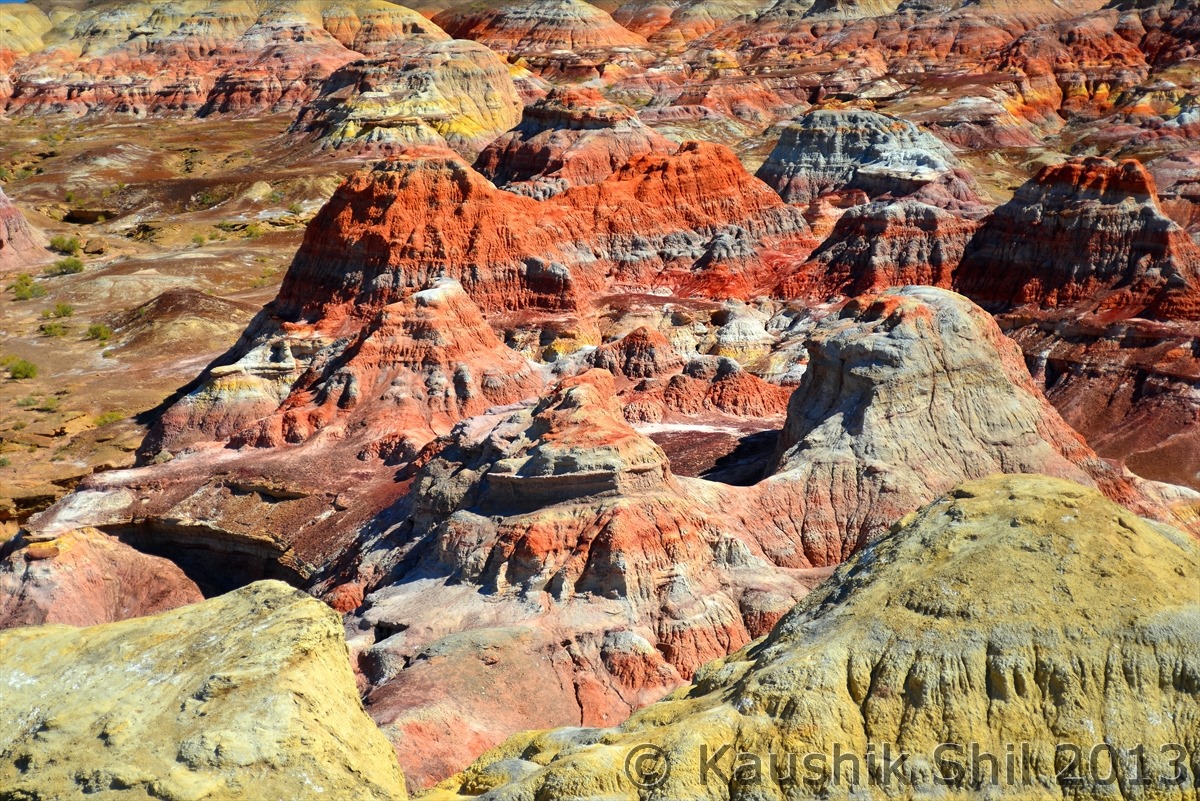

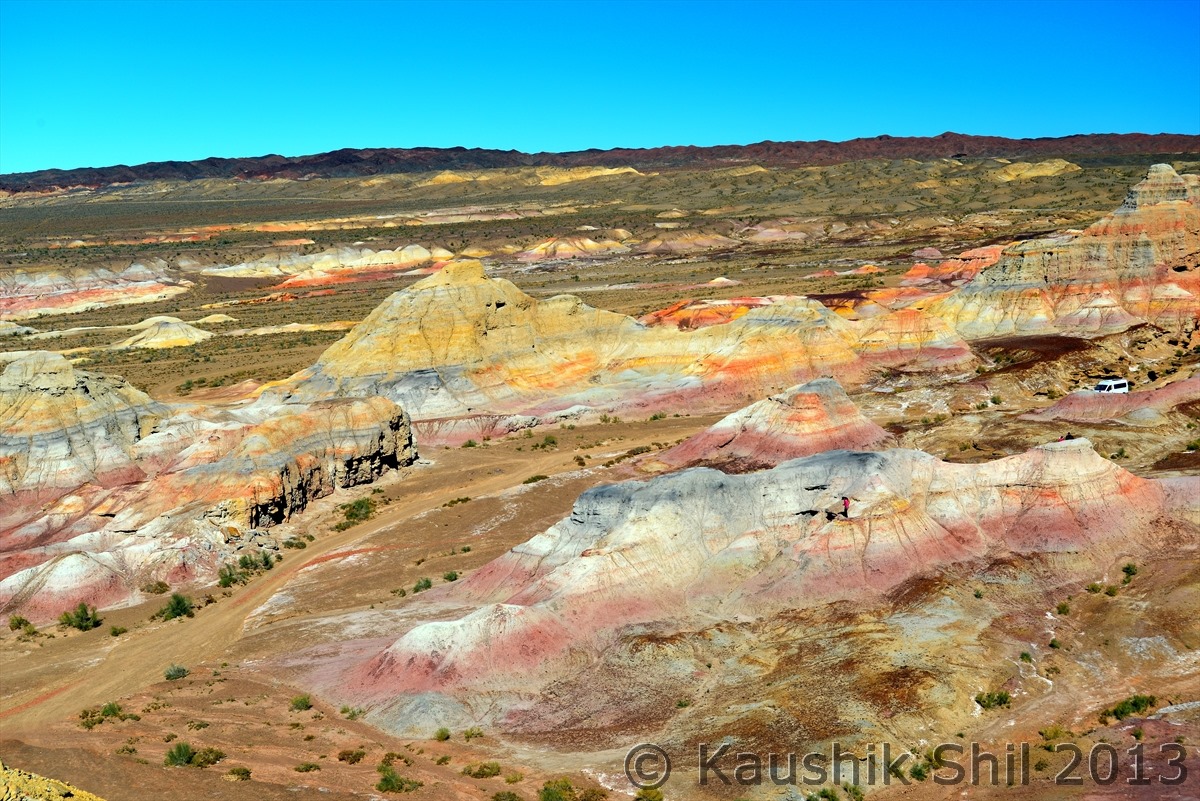

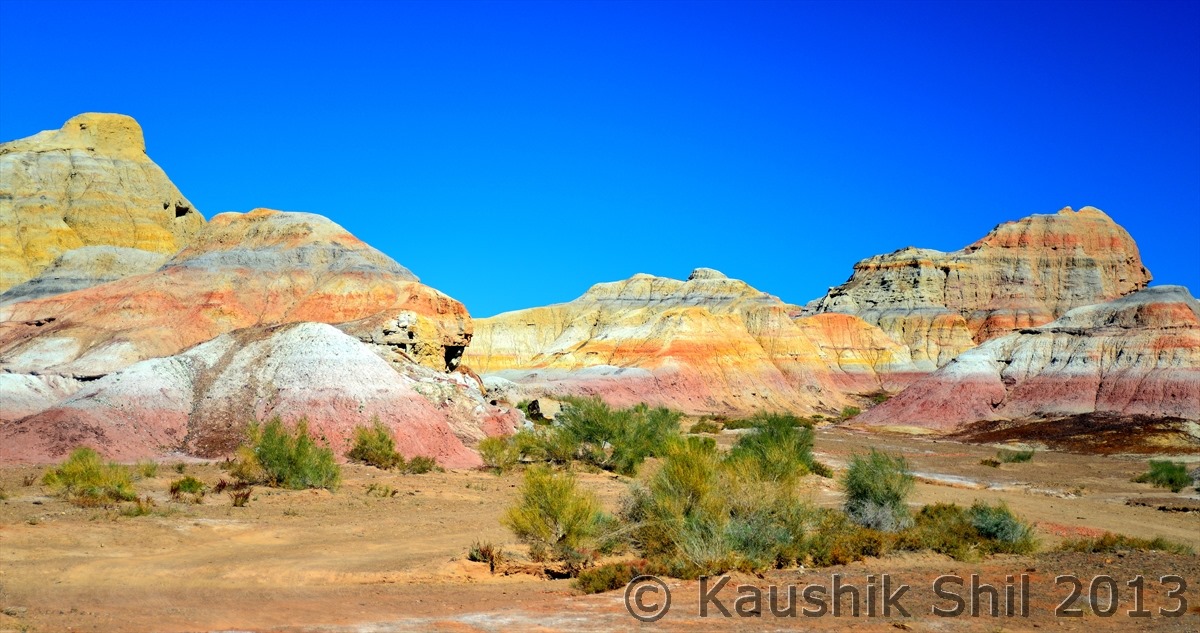


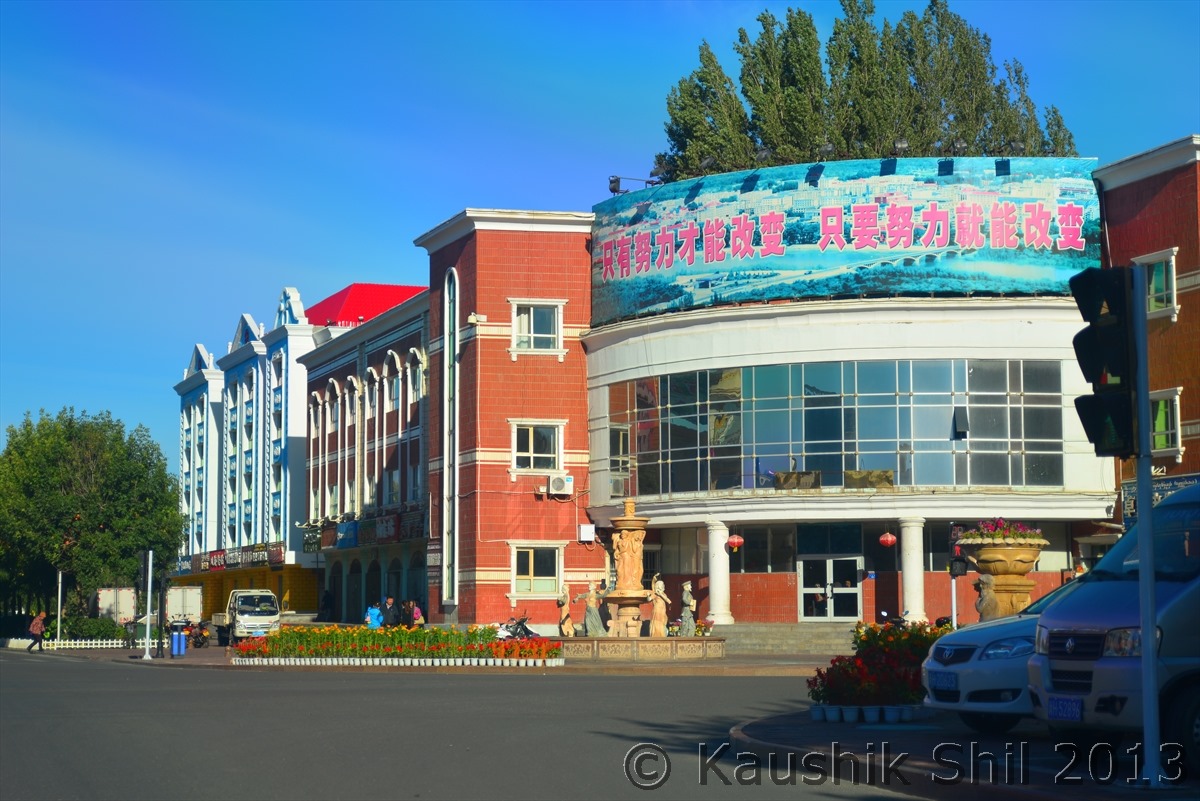
 If someone is below 1.2 mtr, it’s free, between 1.2 to 1.5 mtr its half price, above 1.5 mtr full price. This rule even applicable for scenic fee entries. In station I heard (not seen) they have measurement tape to measure the height in case of any confusion
If someone is below 1.2 mtr, it’s free, between 1.2 to 1.5 mtr its half price, above 1.5 mtr full price. This rule even applicable for scenic fee entries. In station I heard (not seen) they have measurement tape to measure the height in case of any confusion

